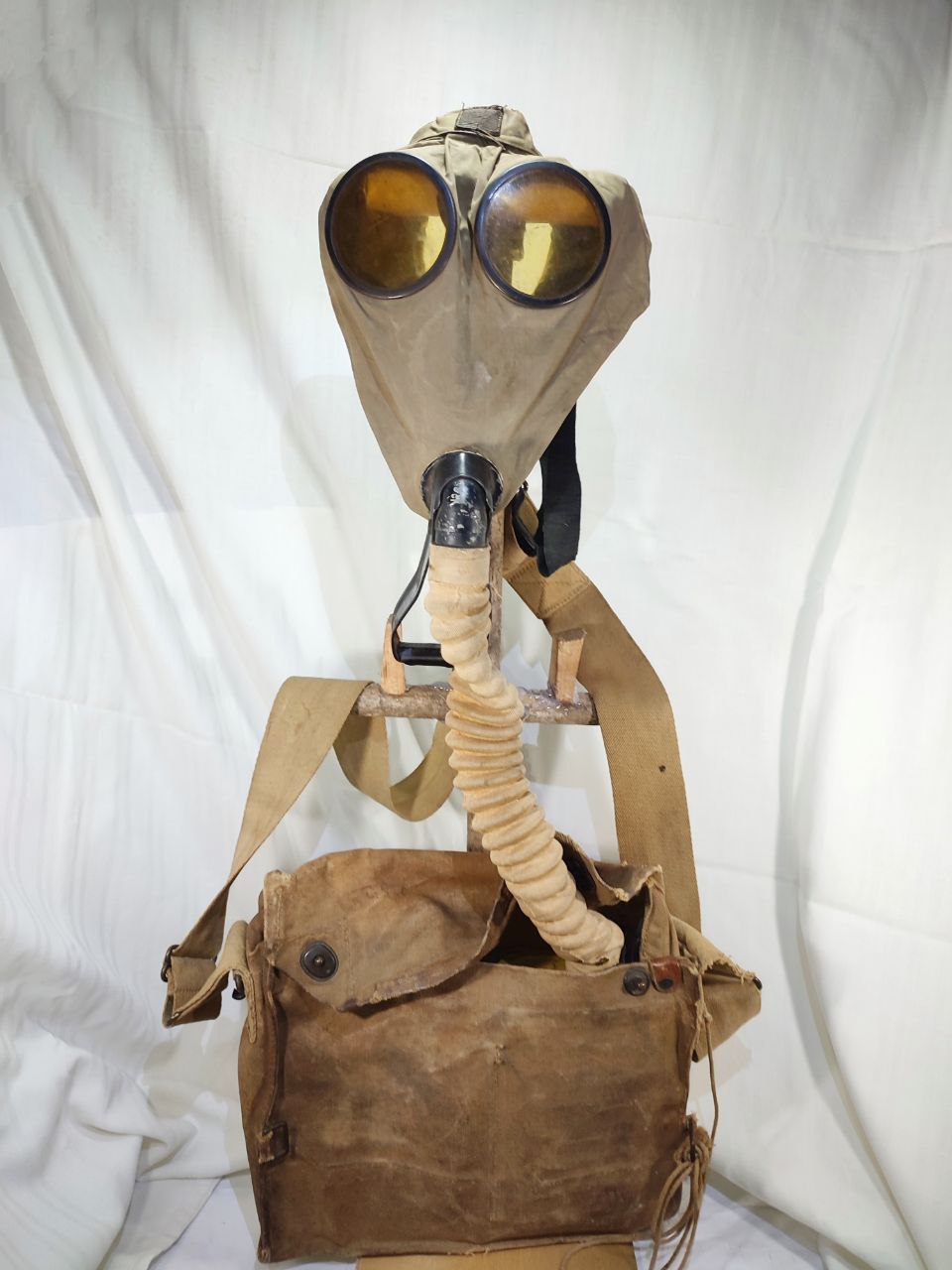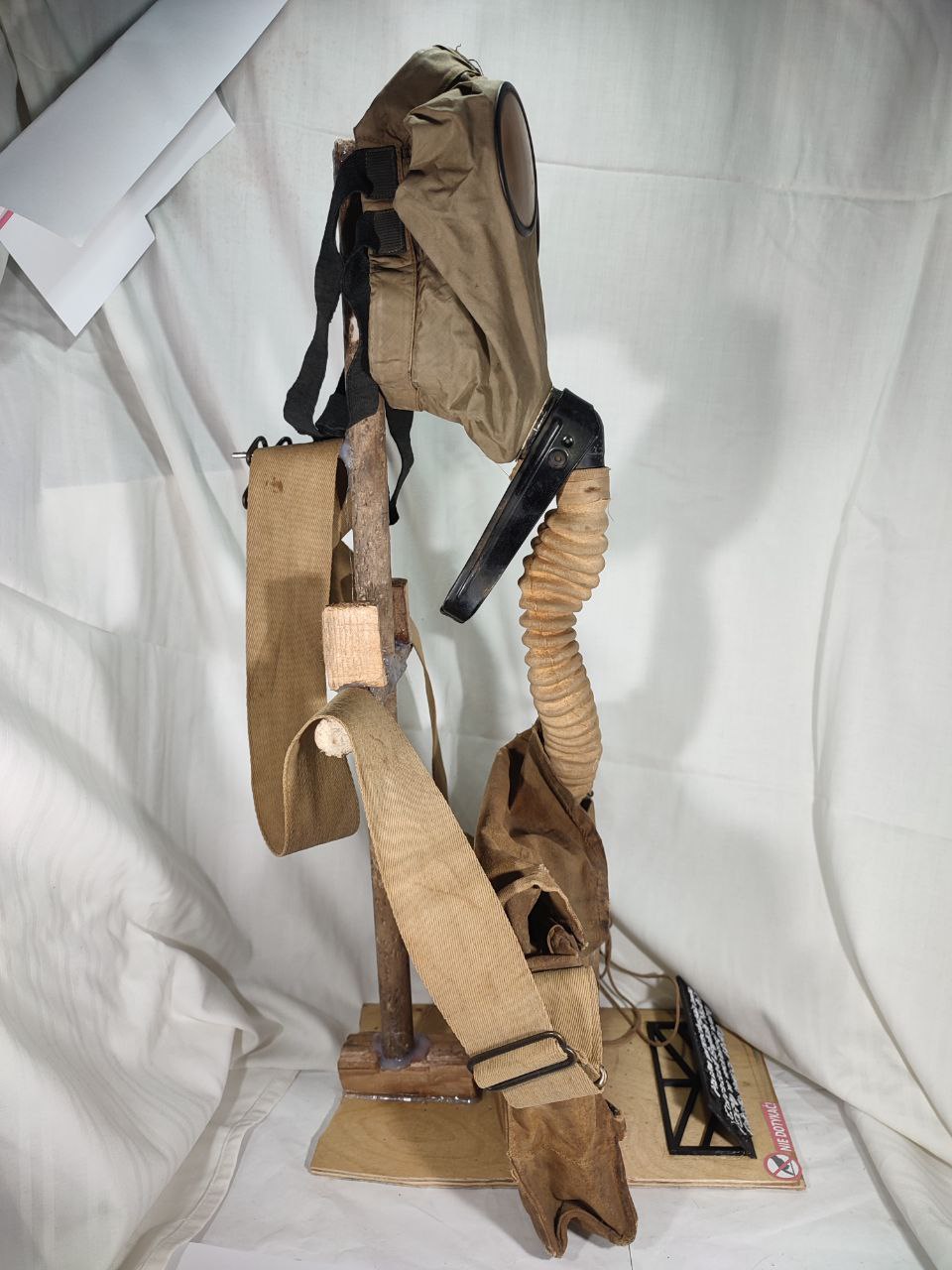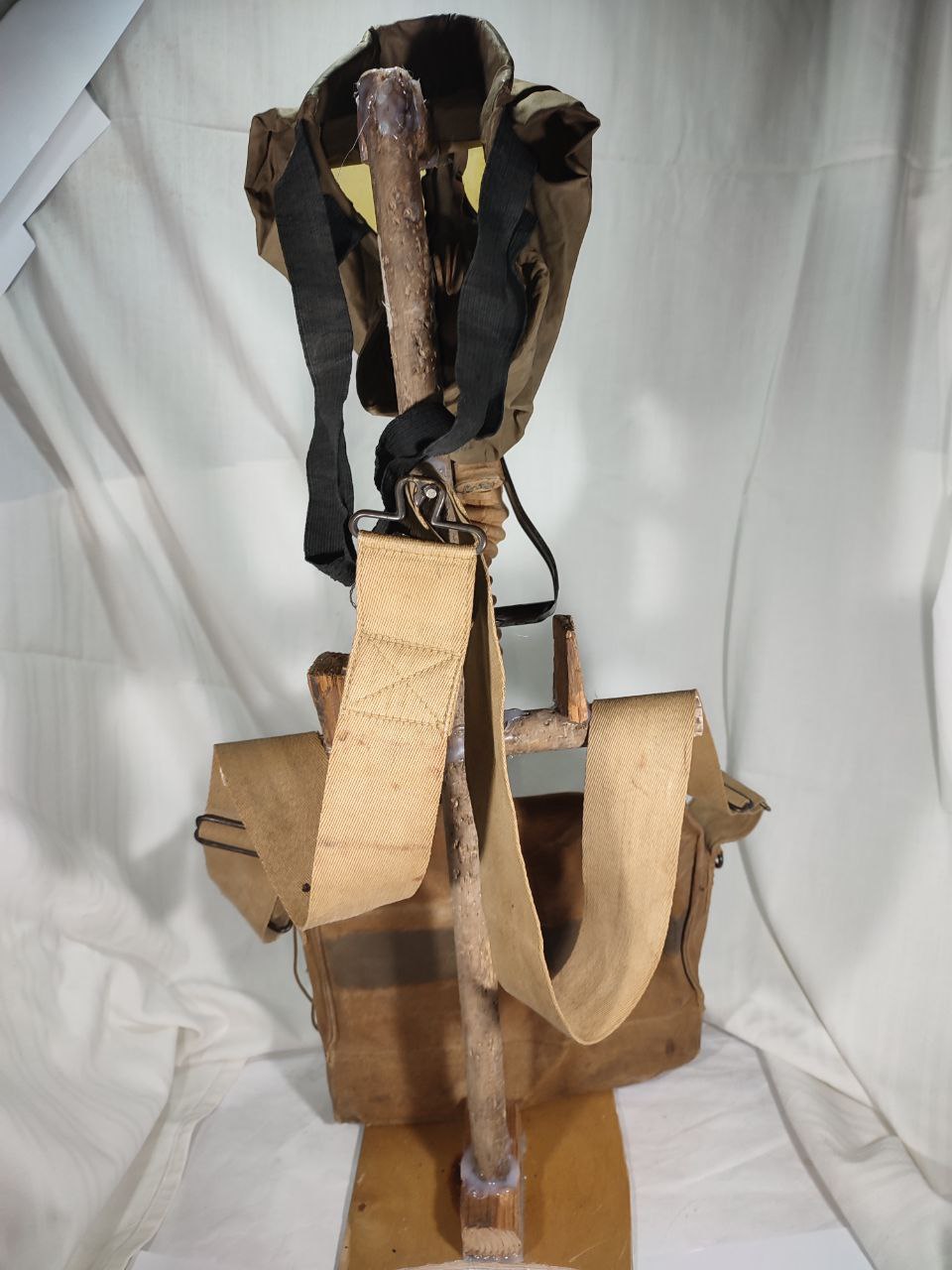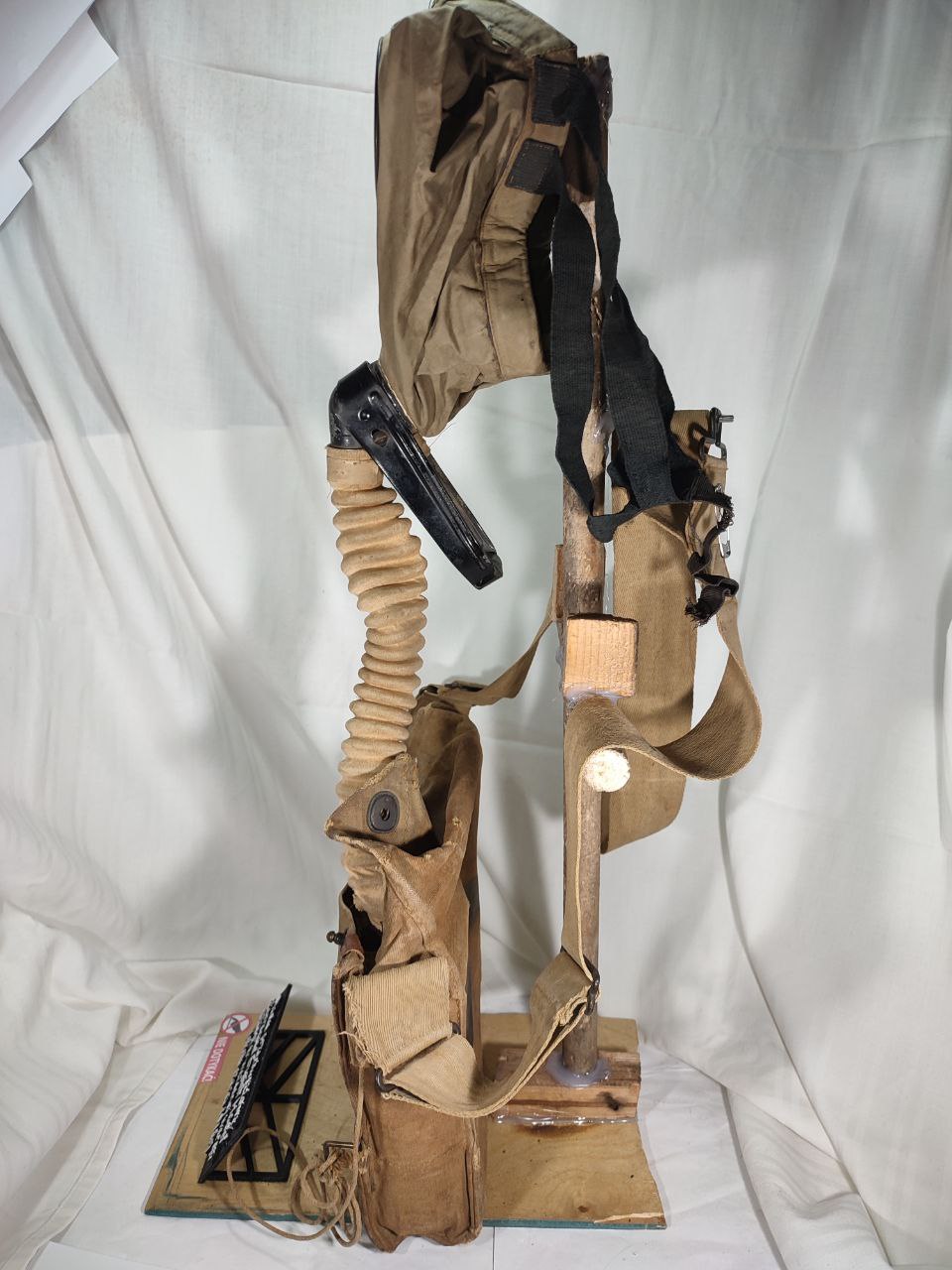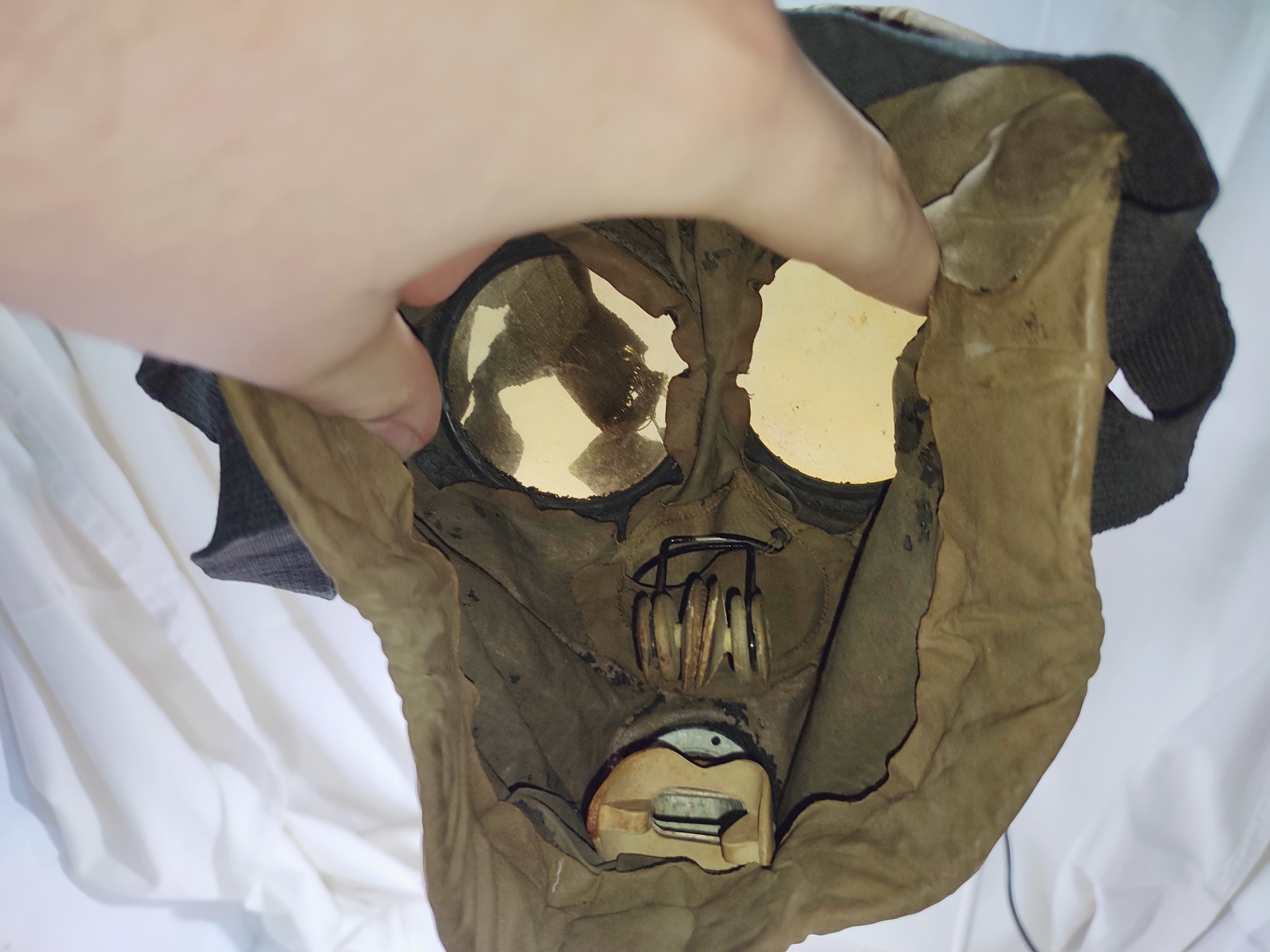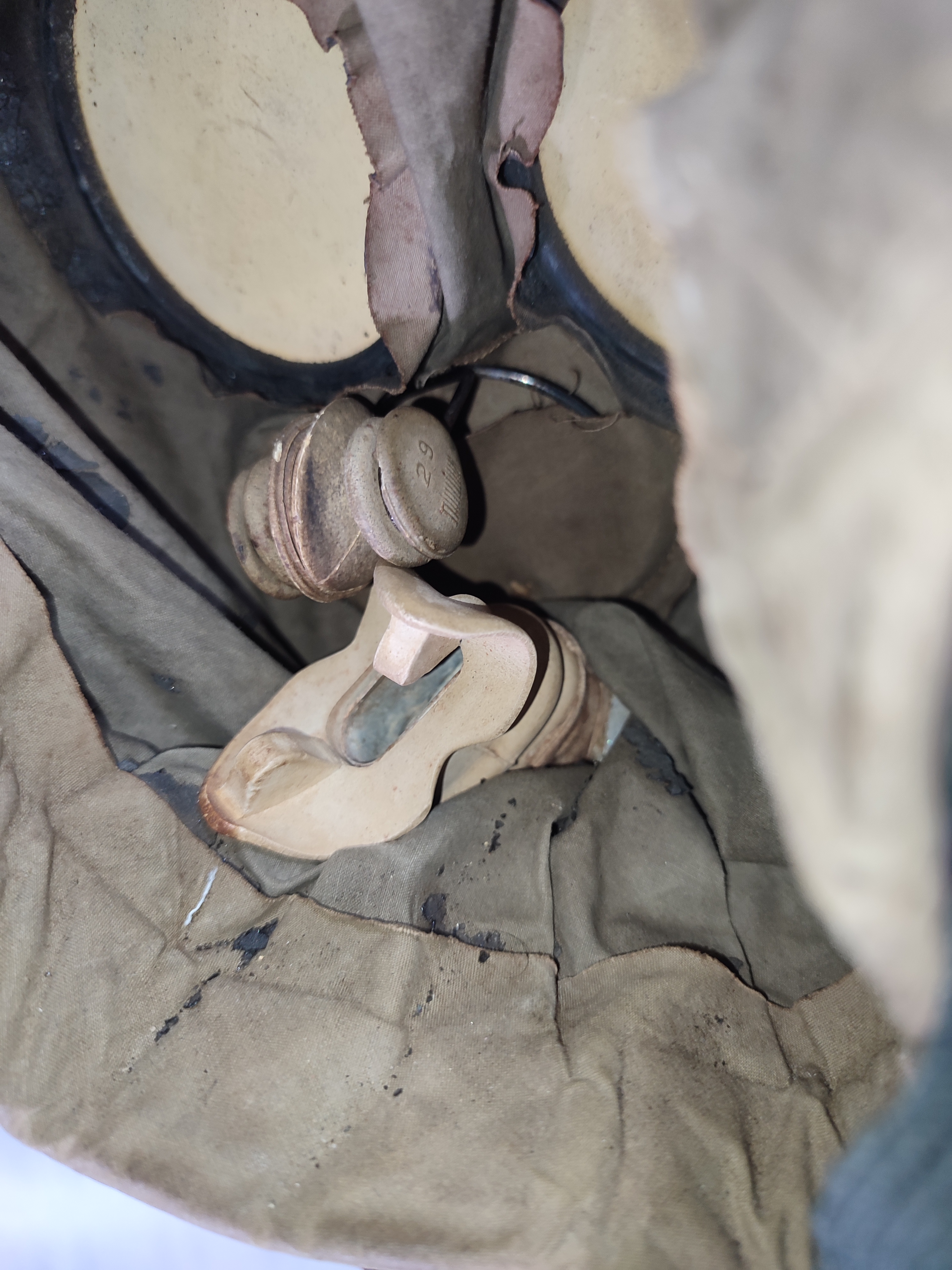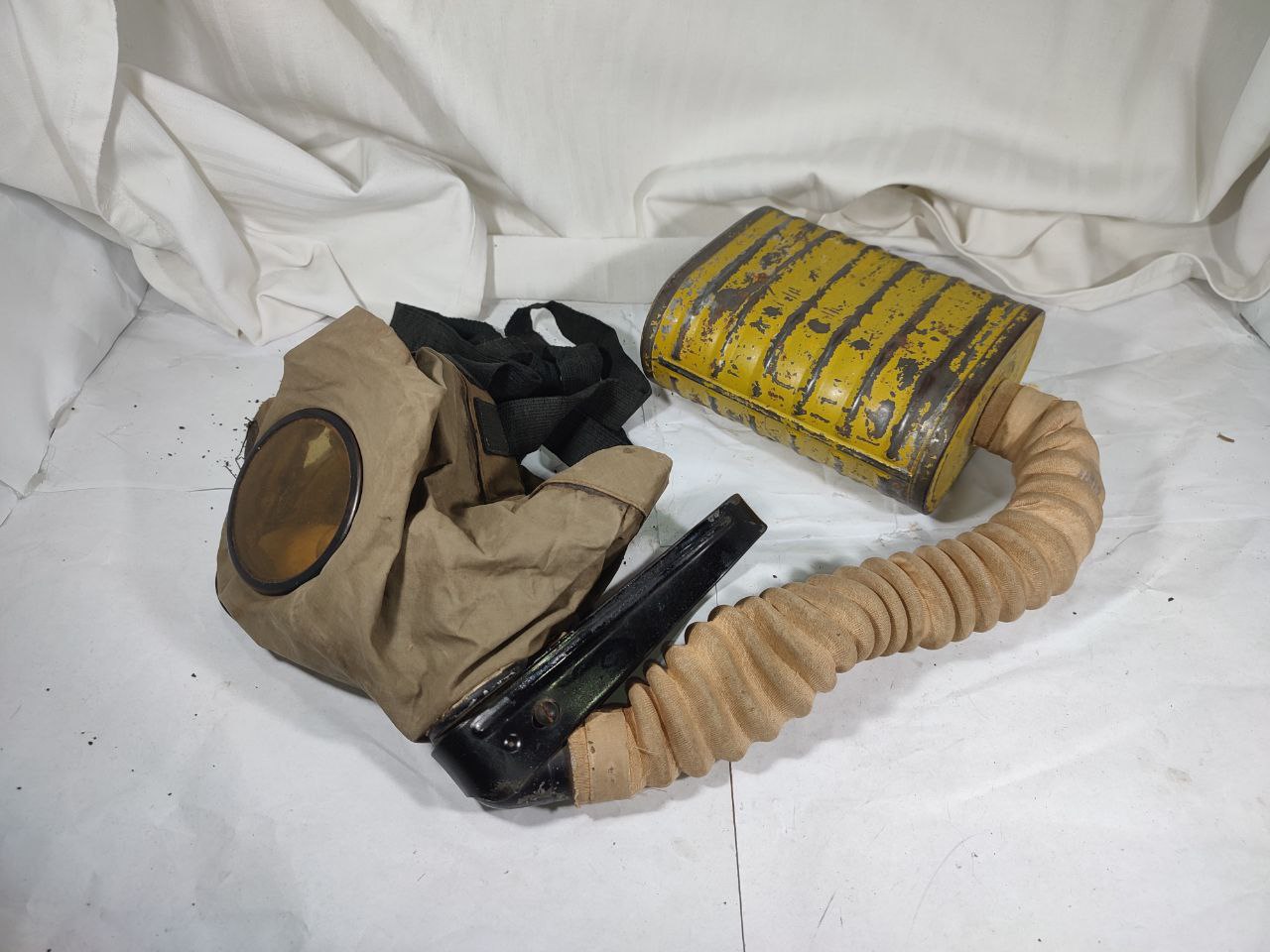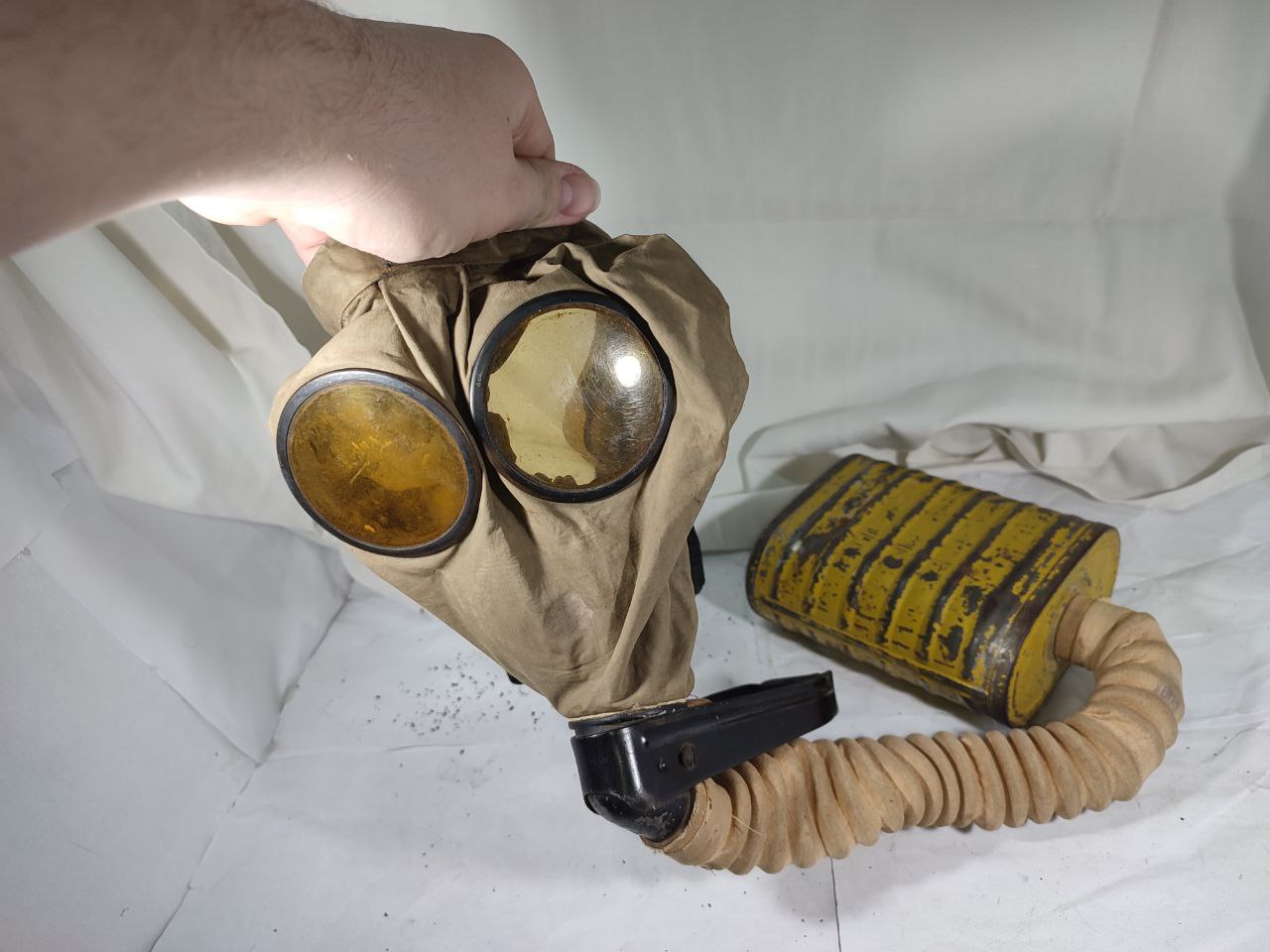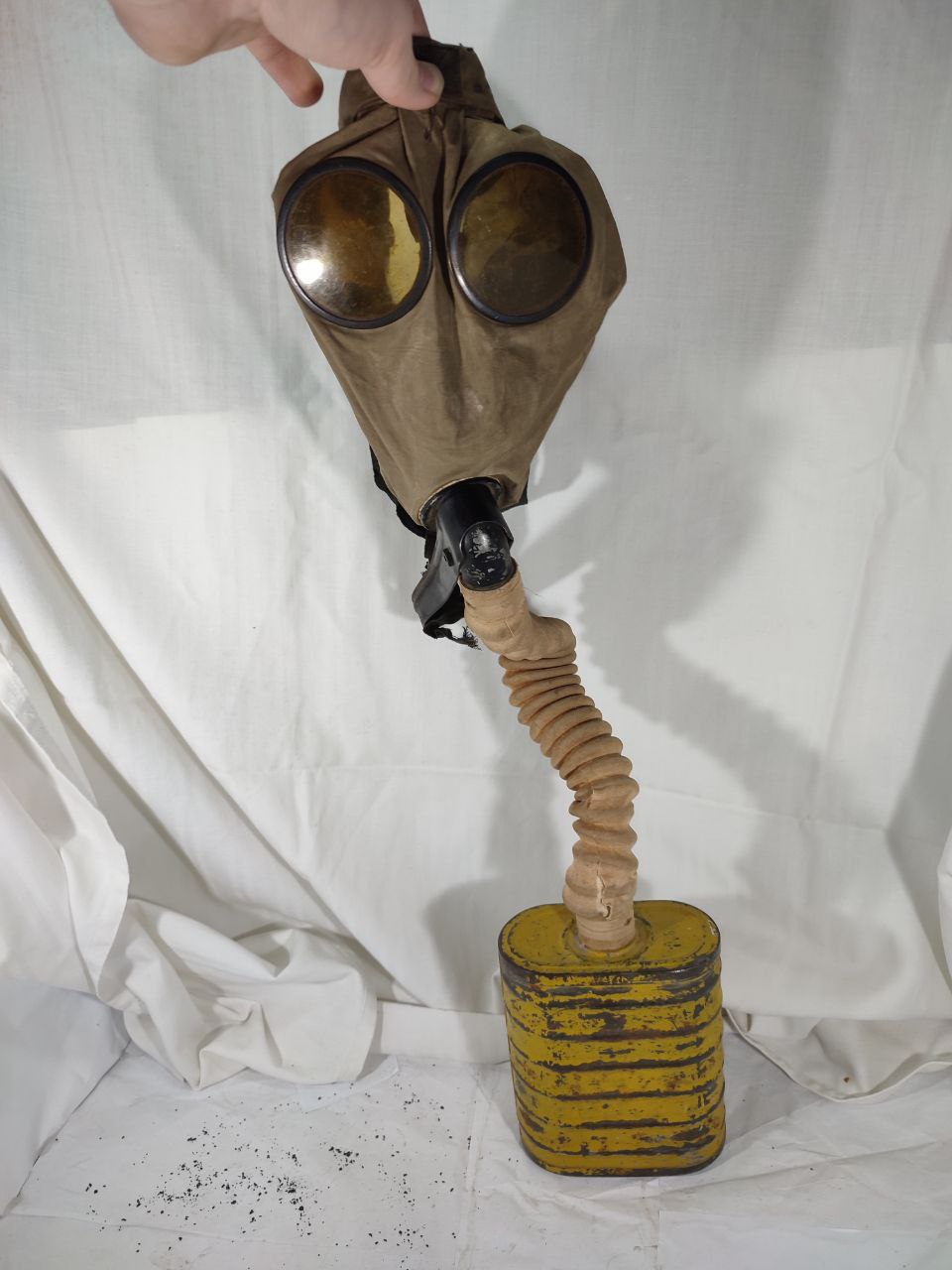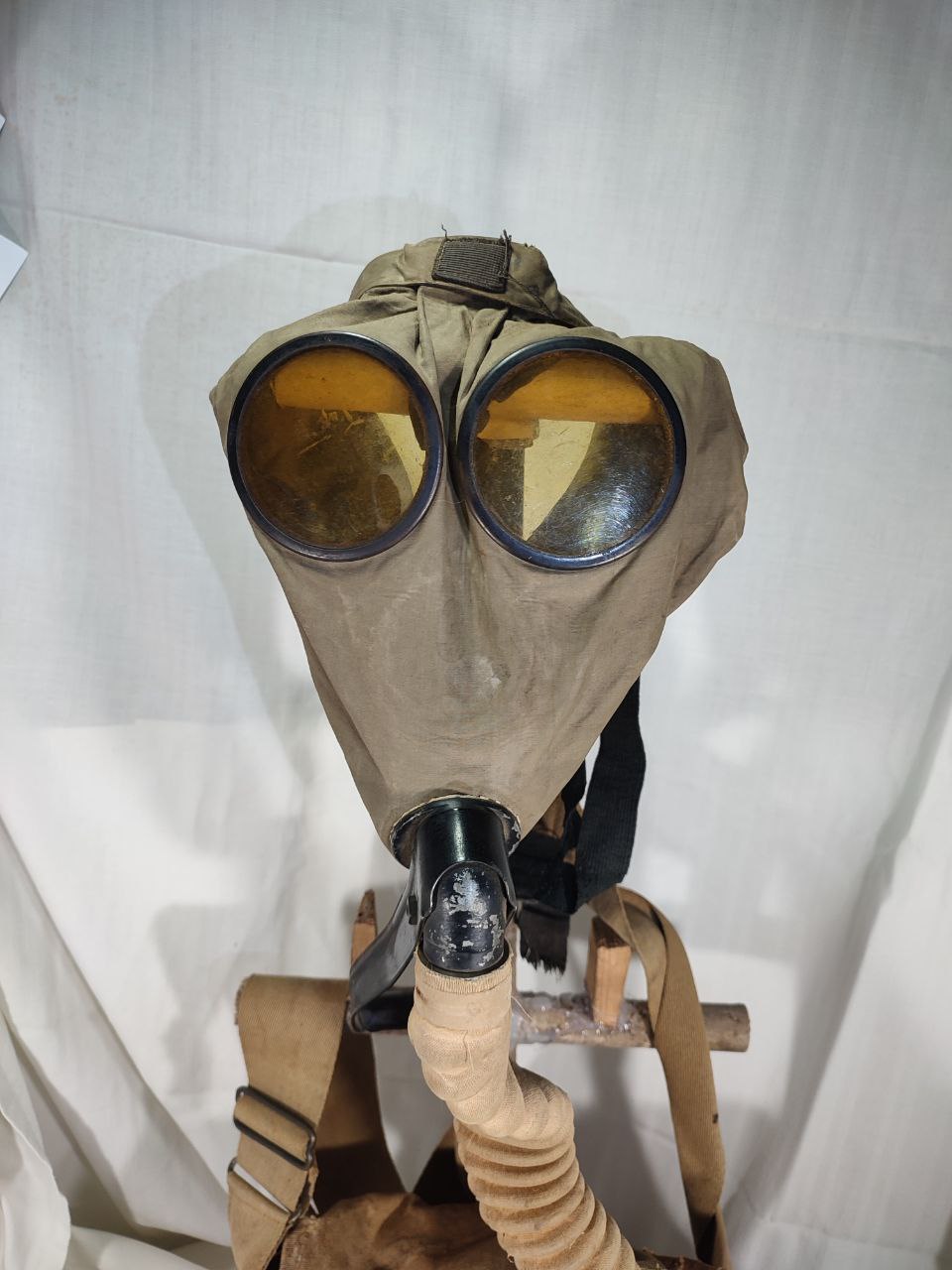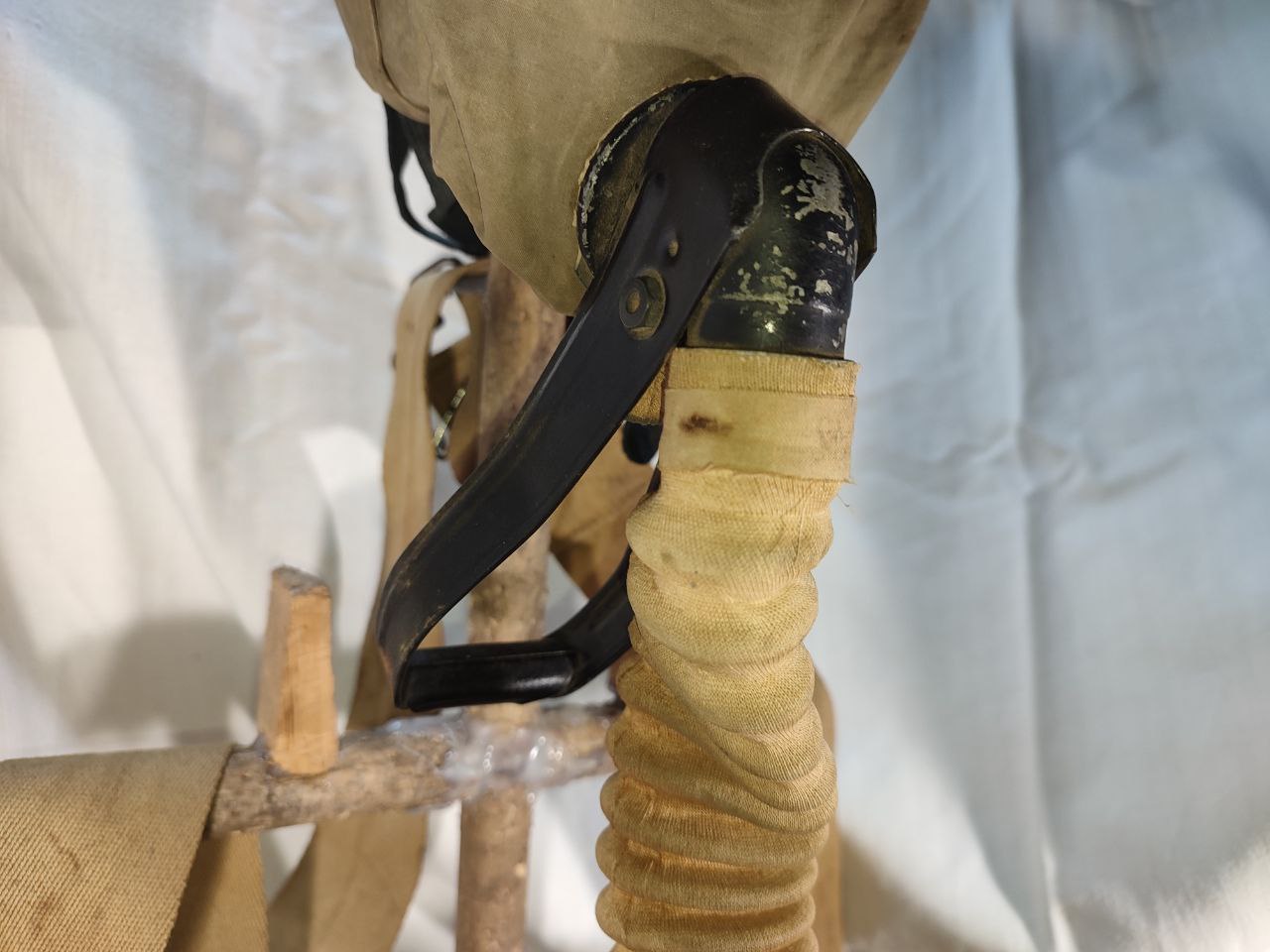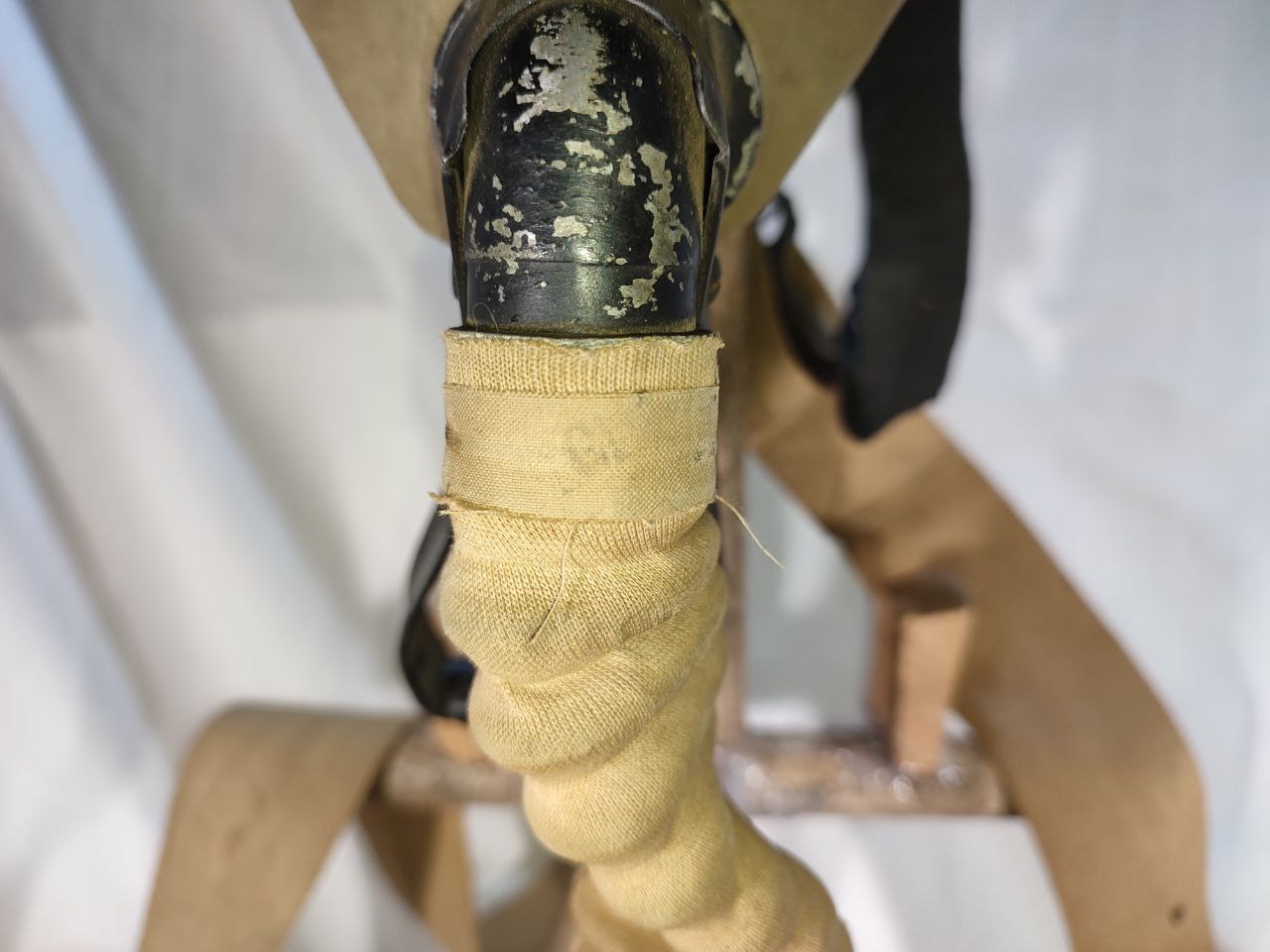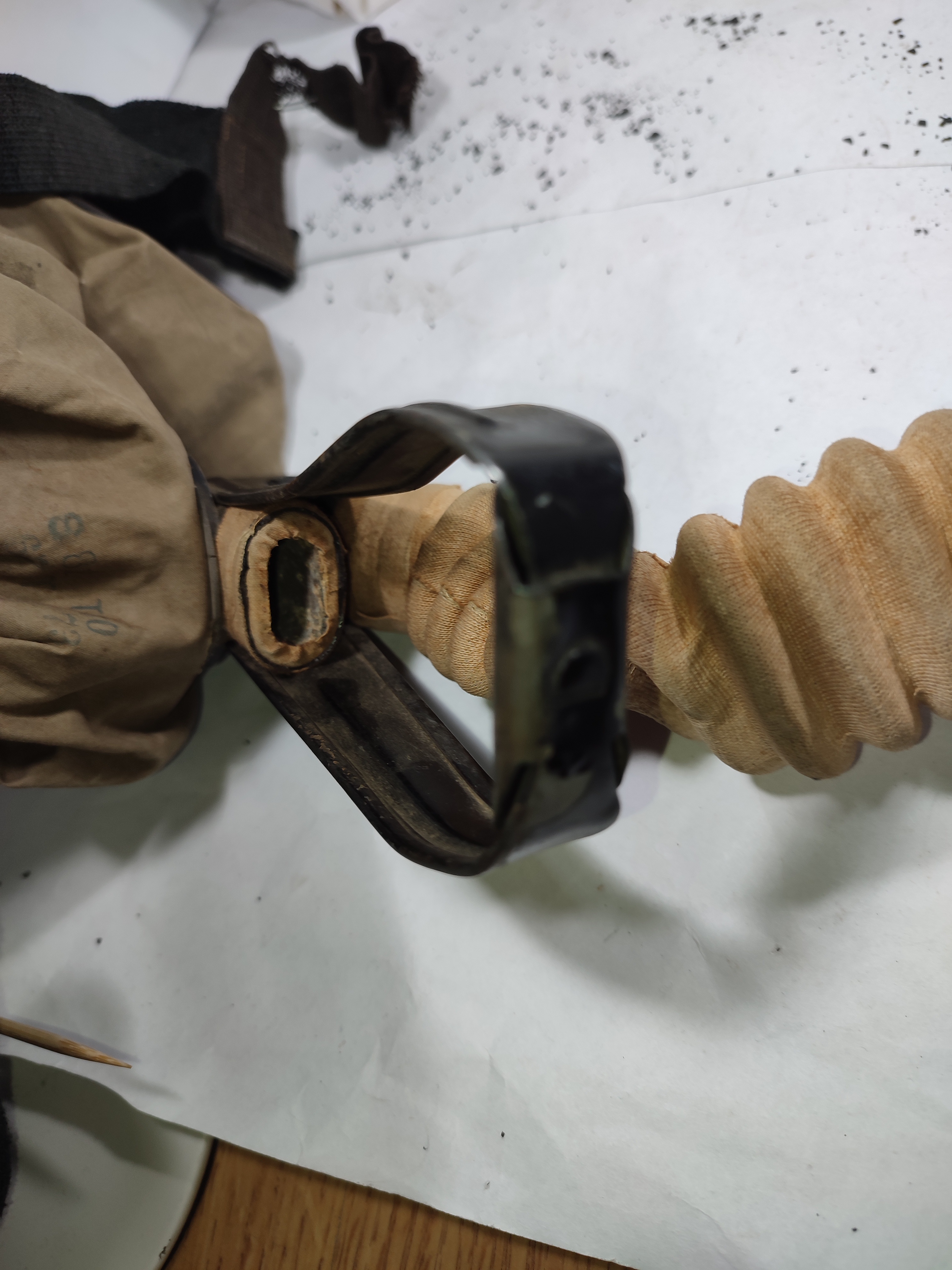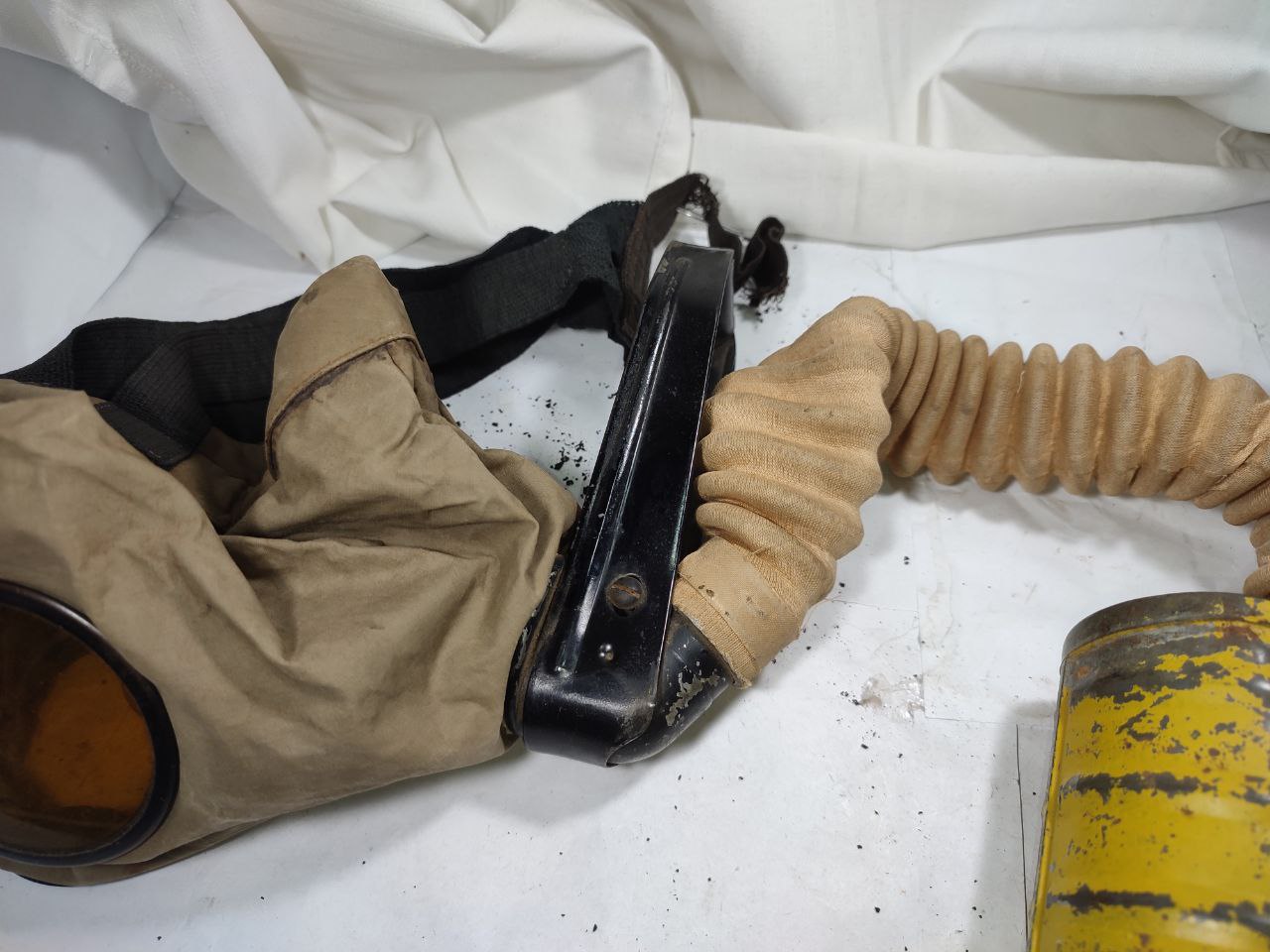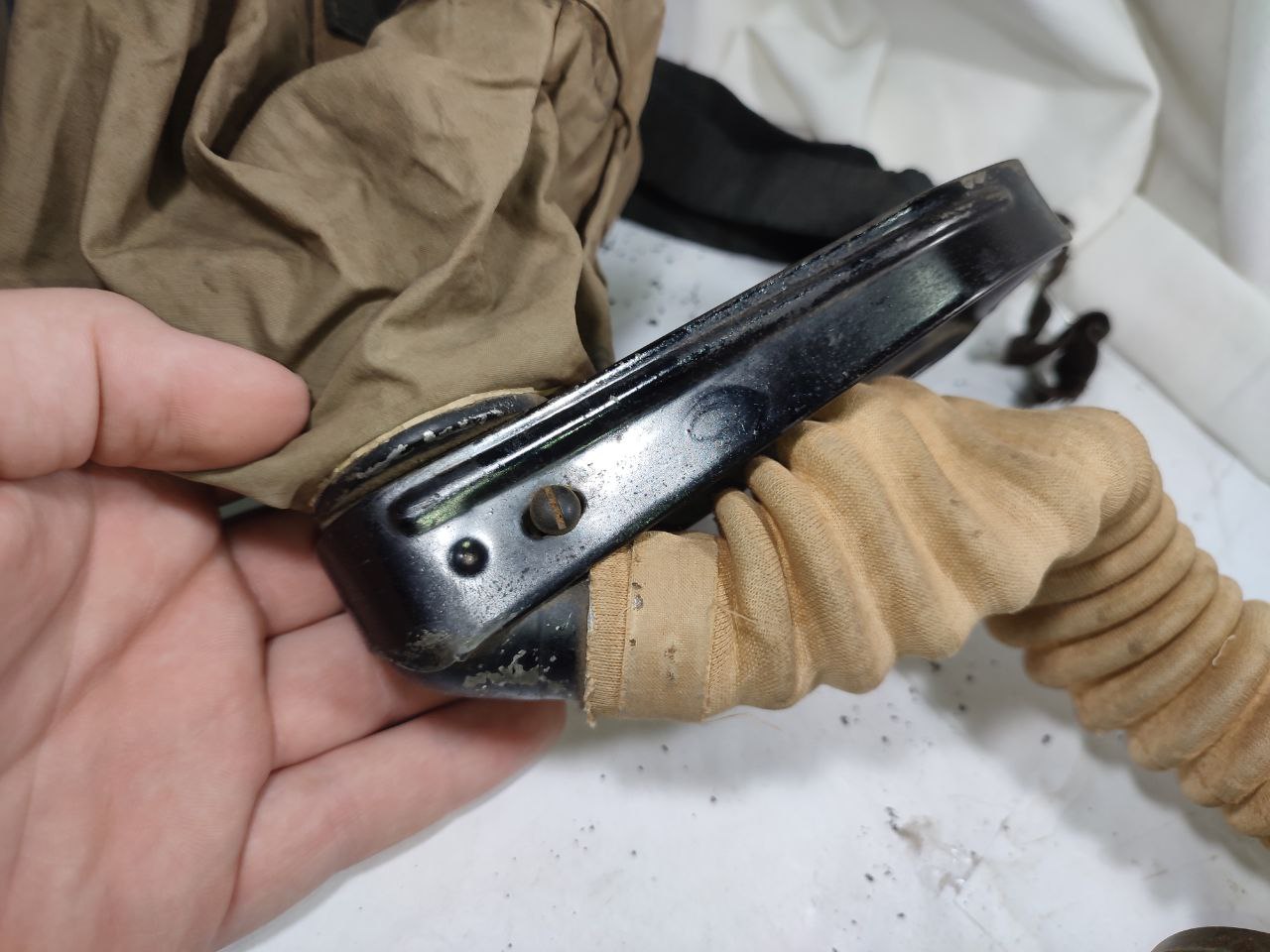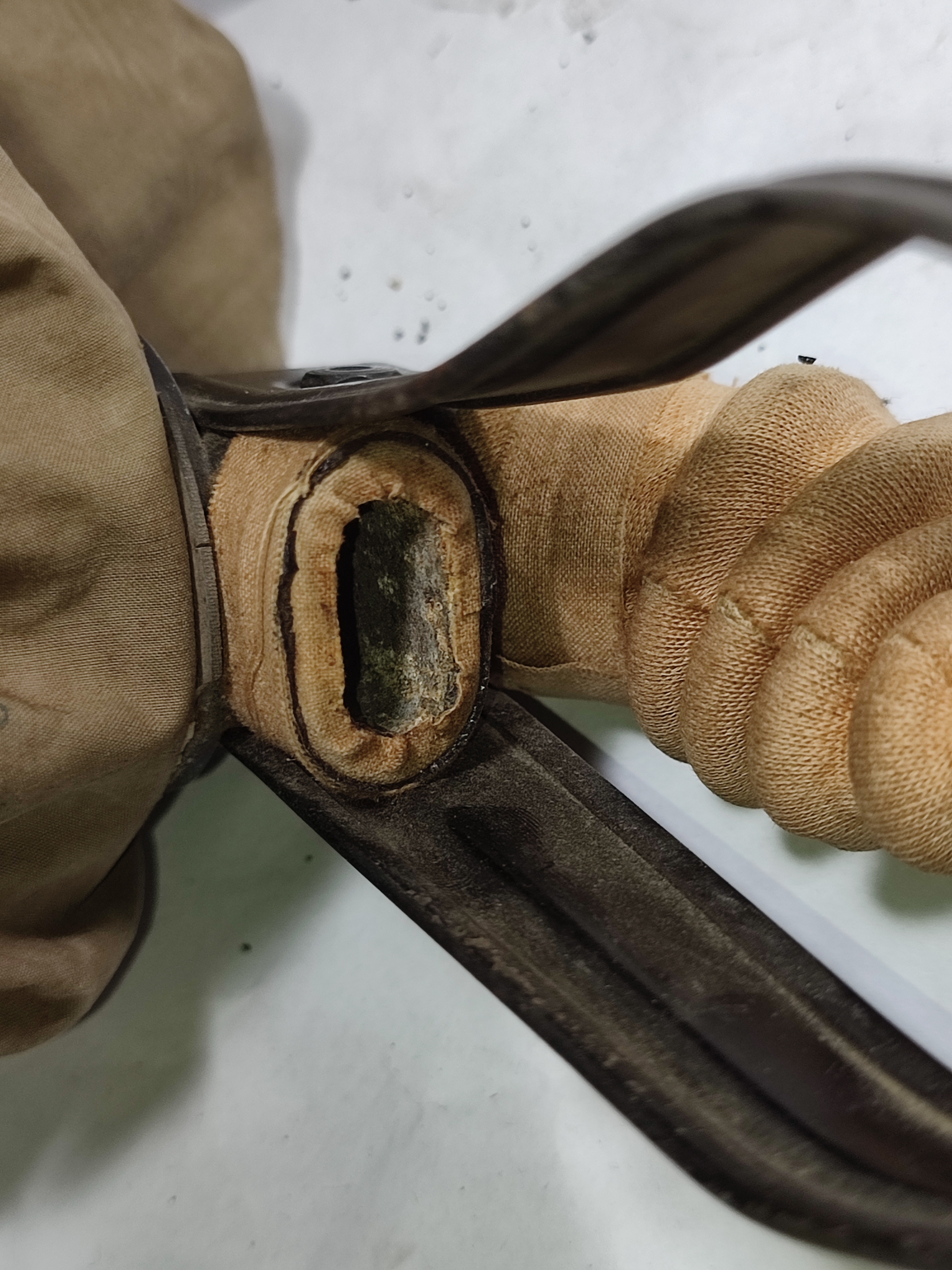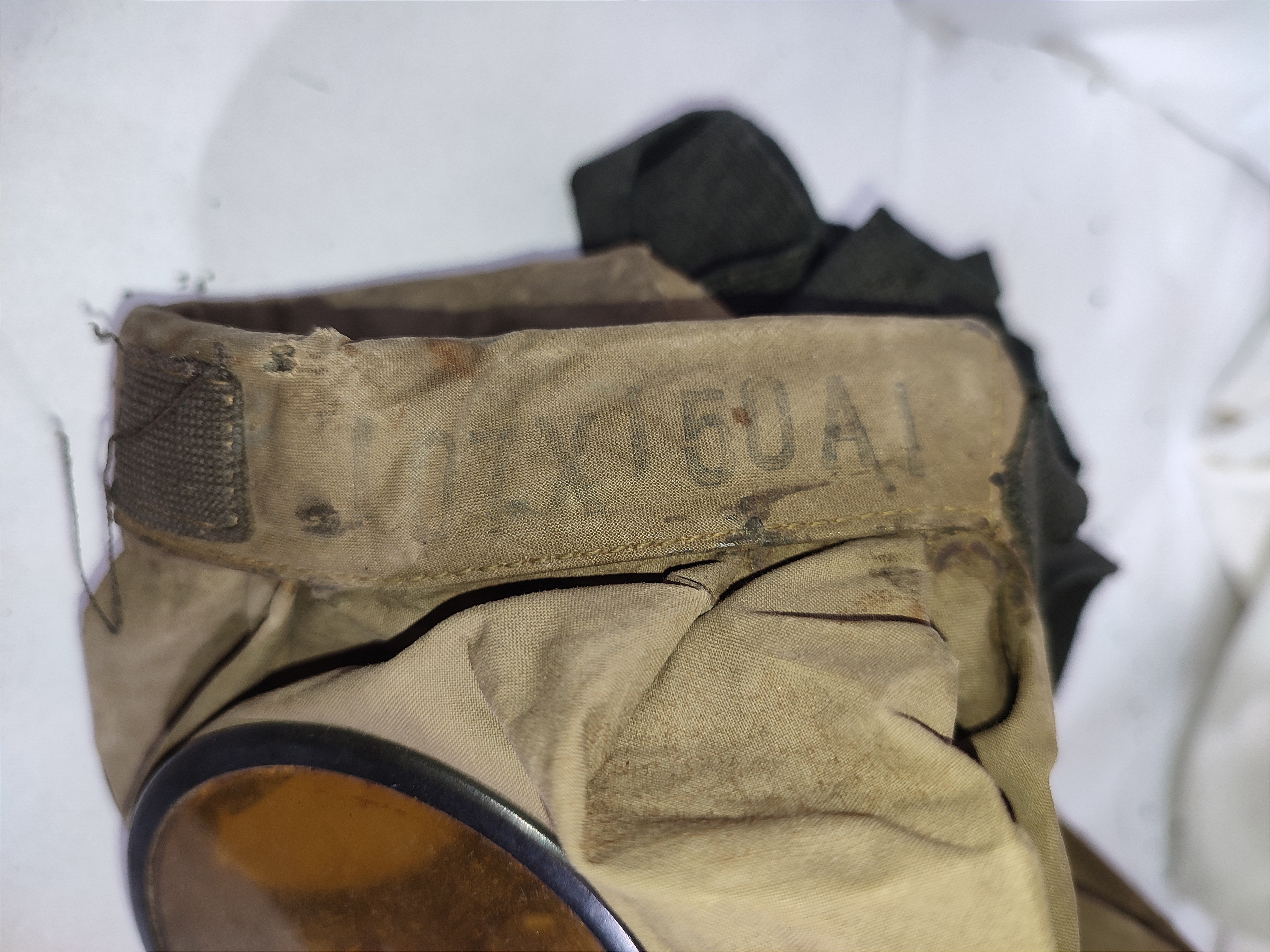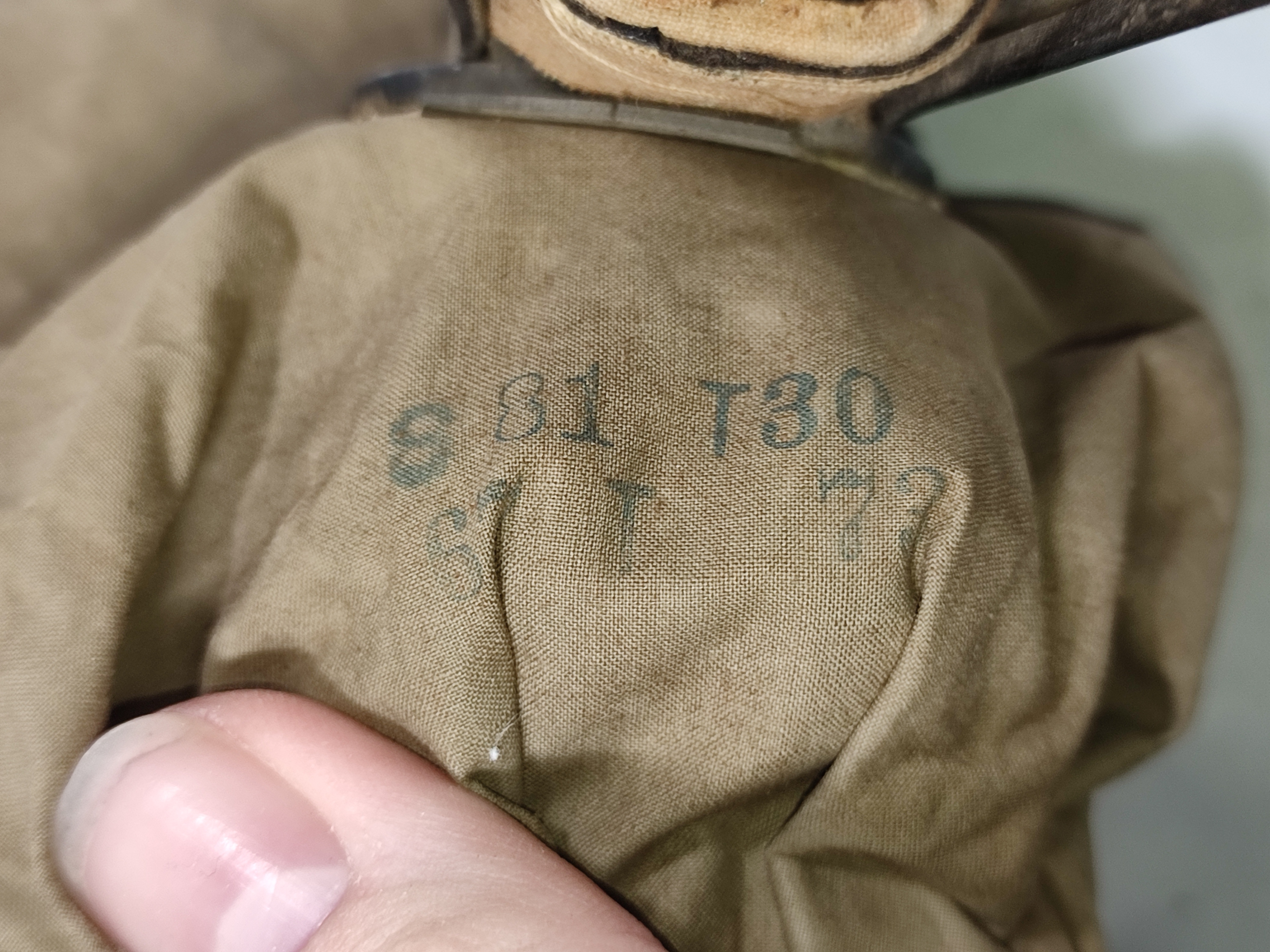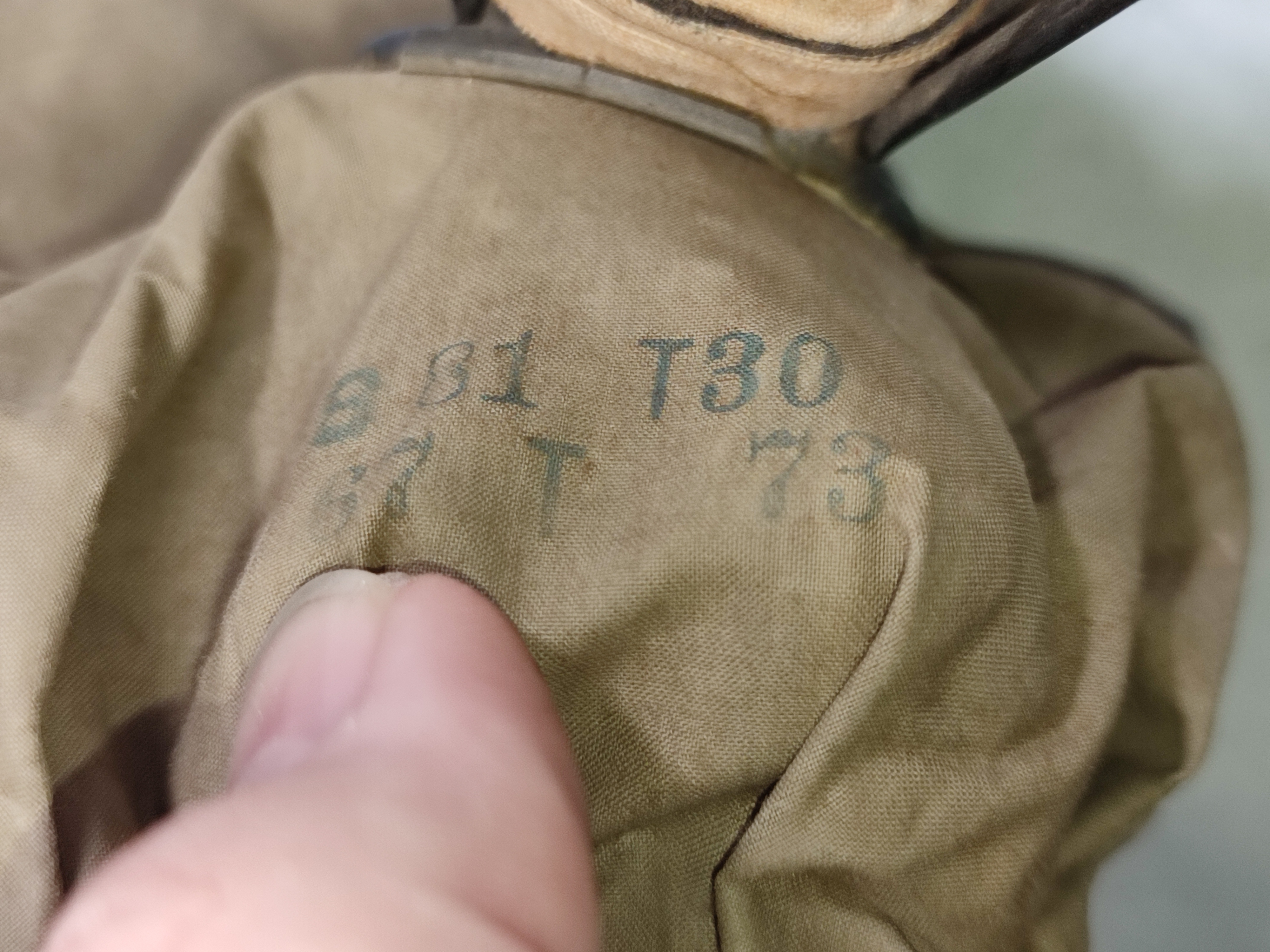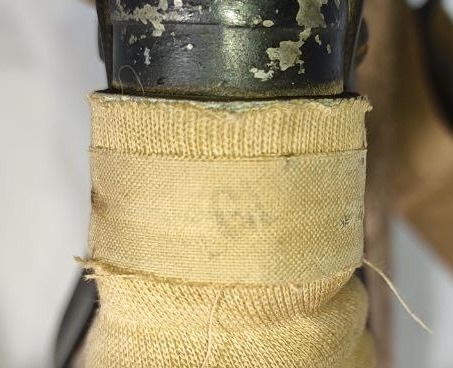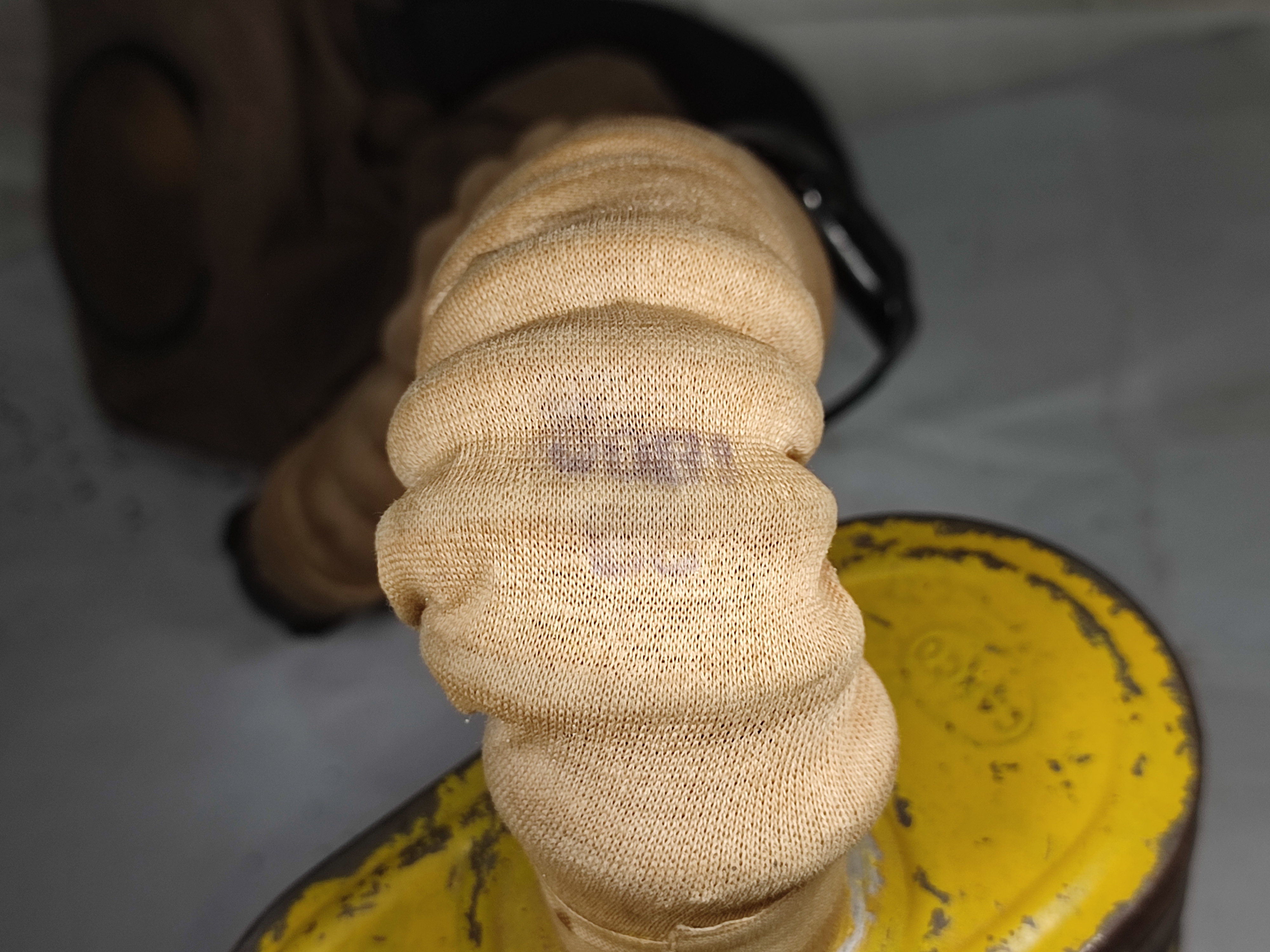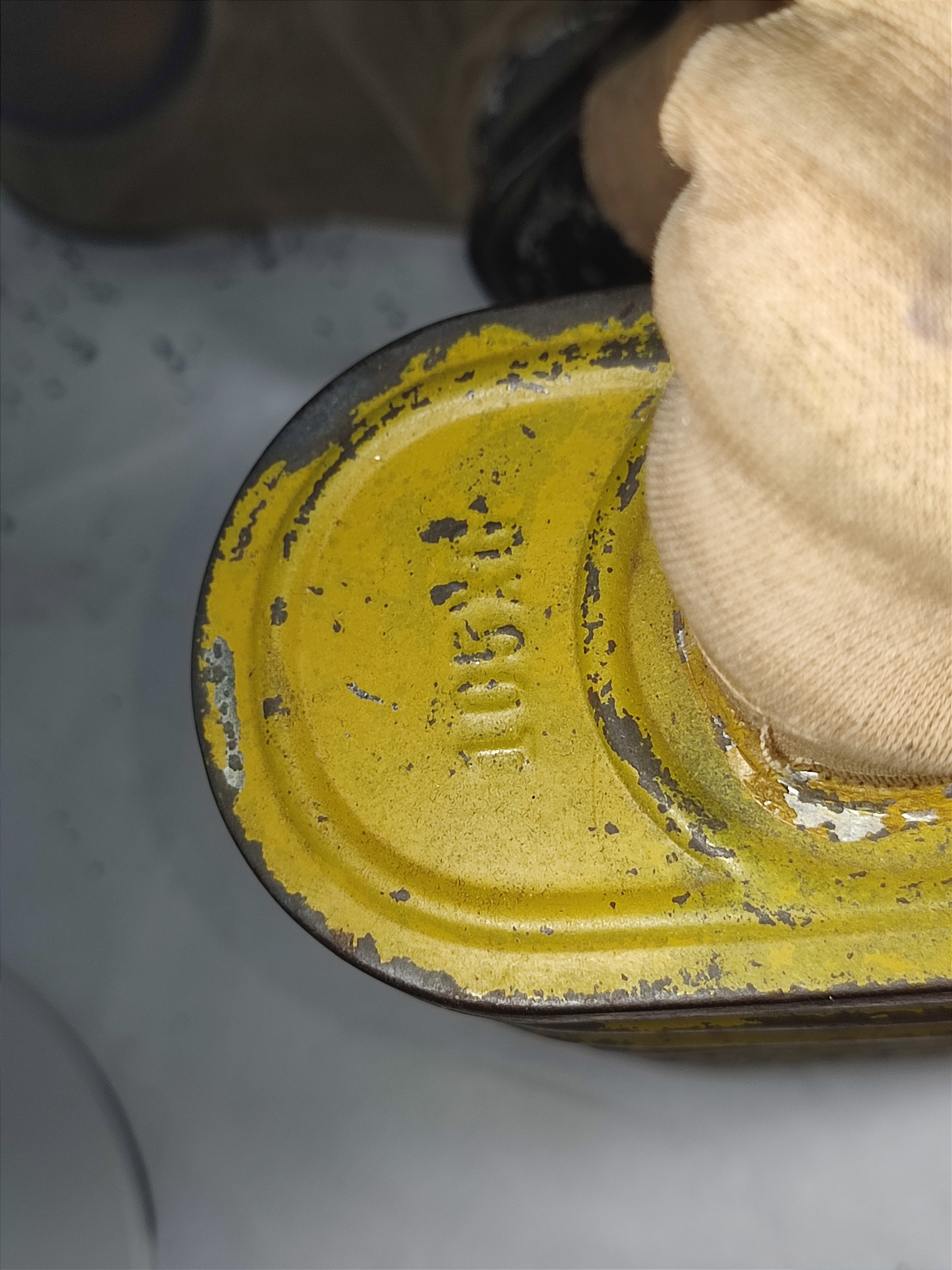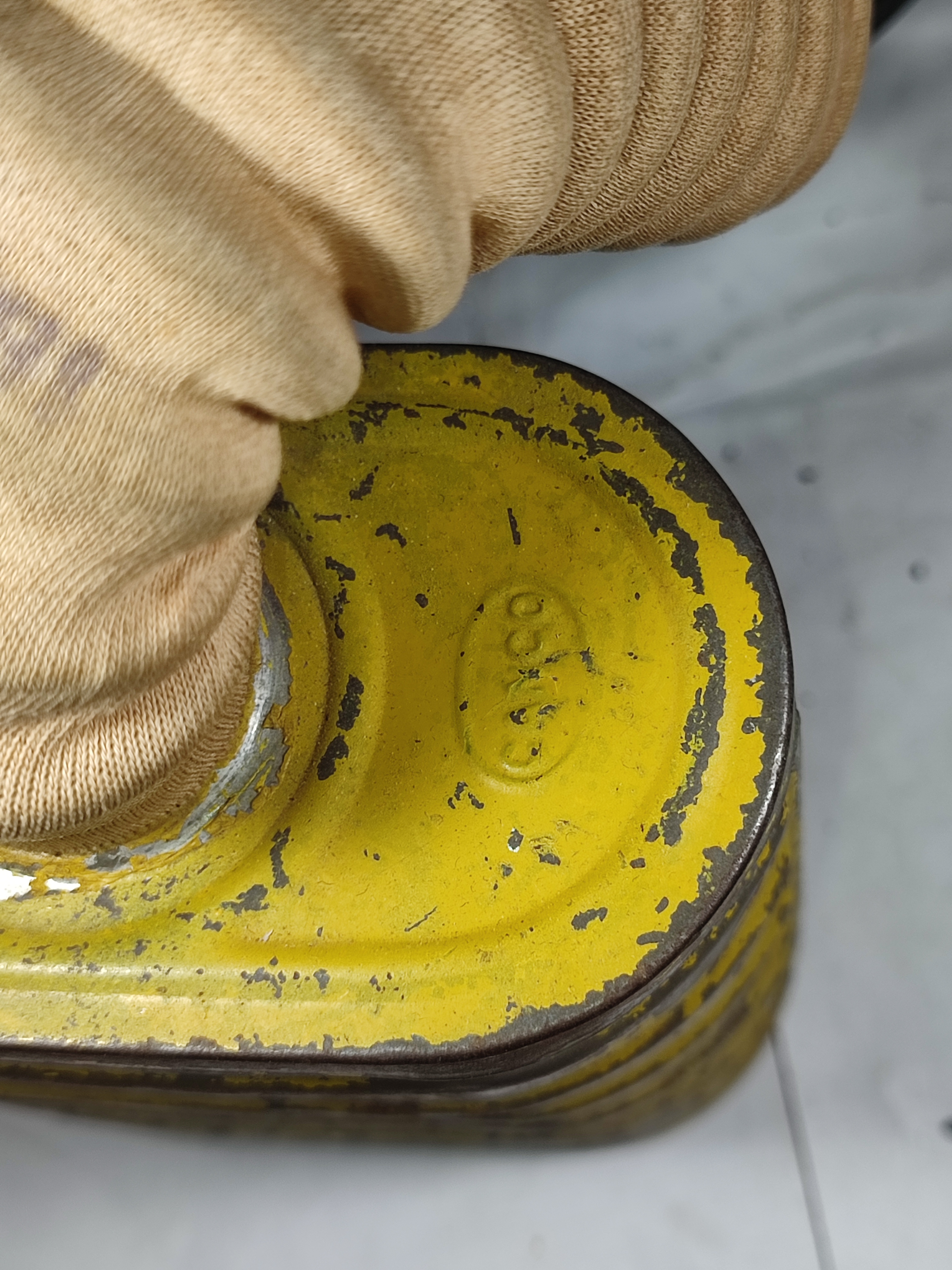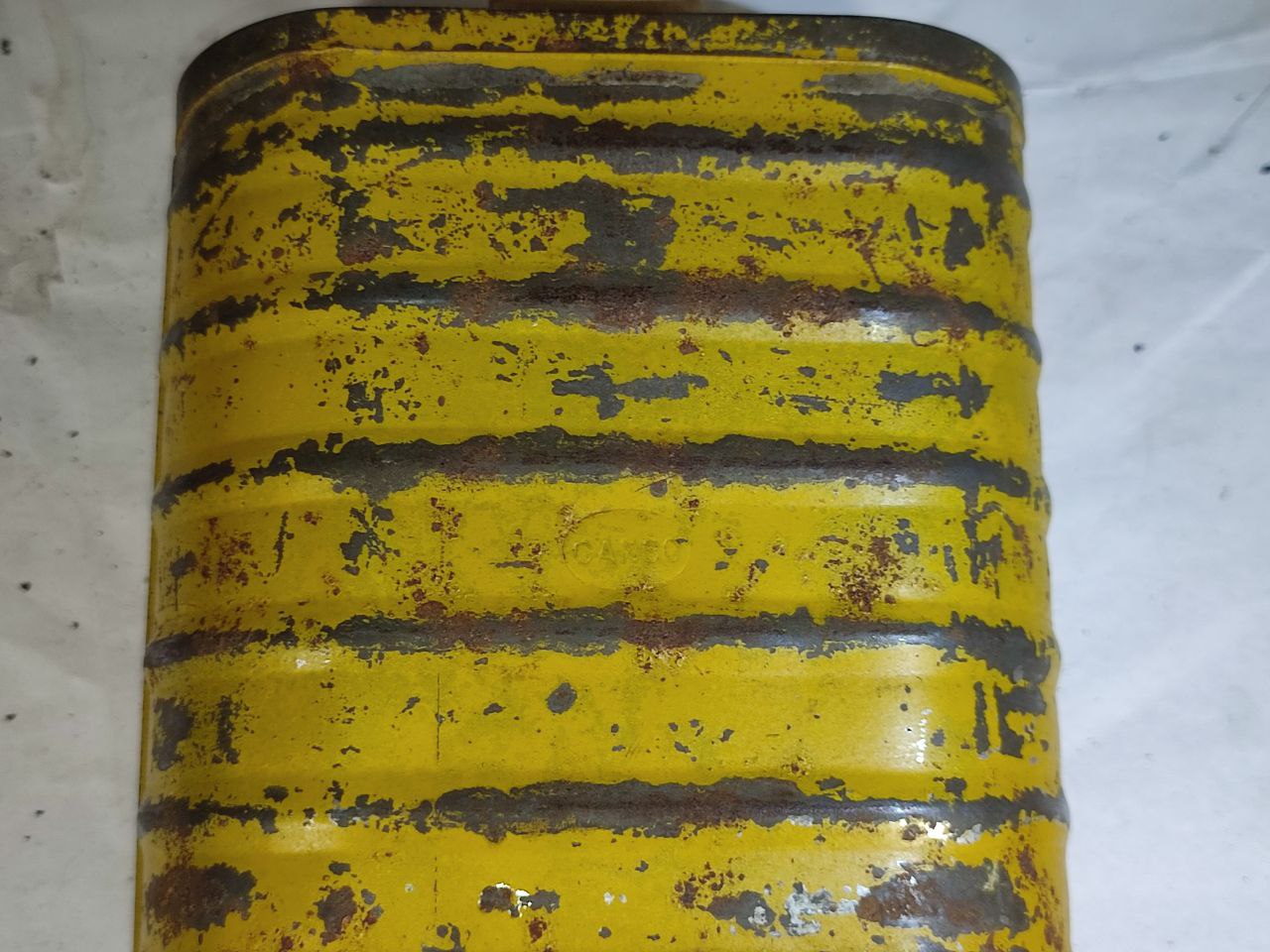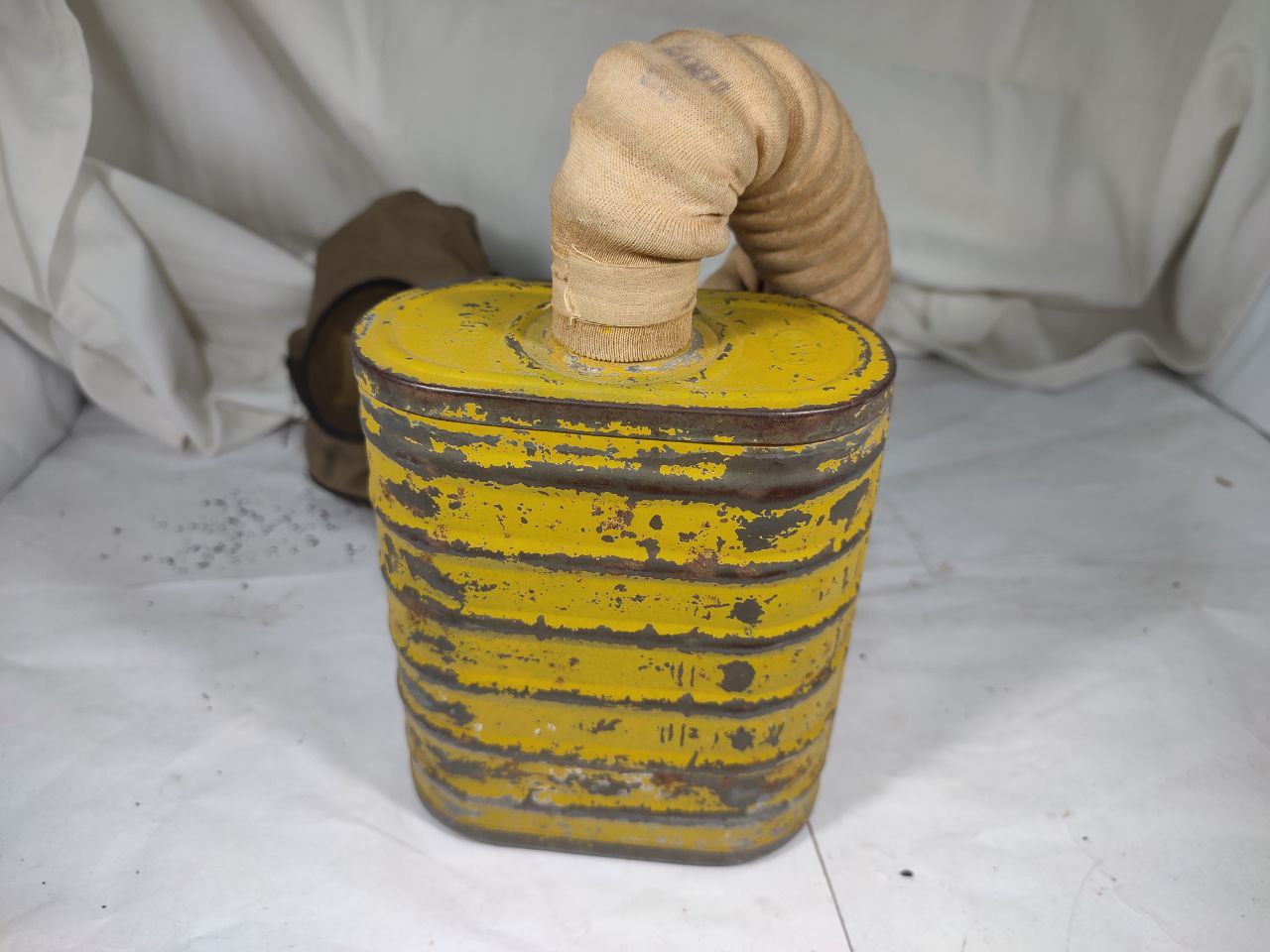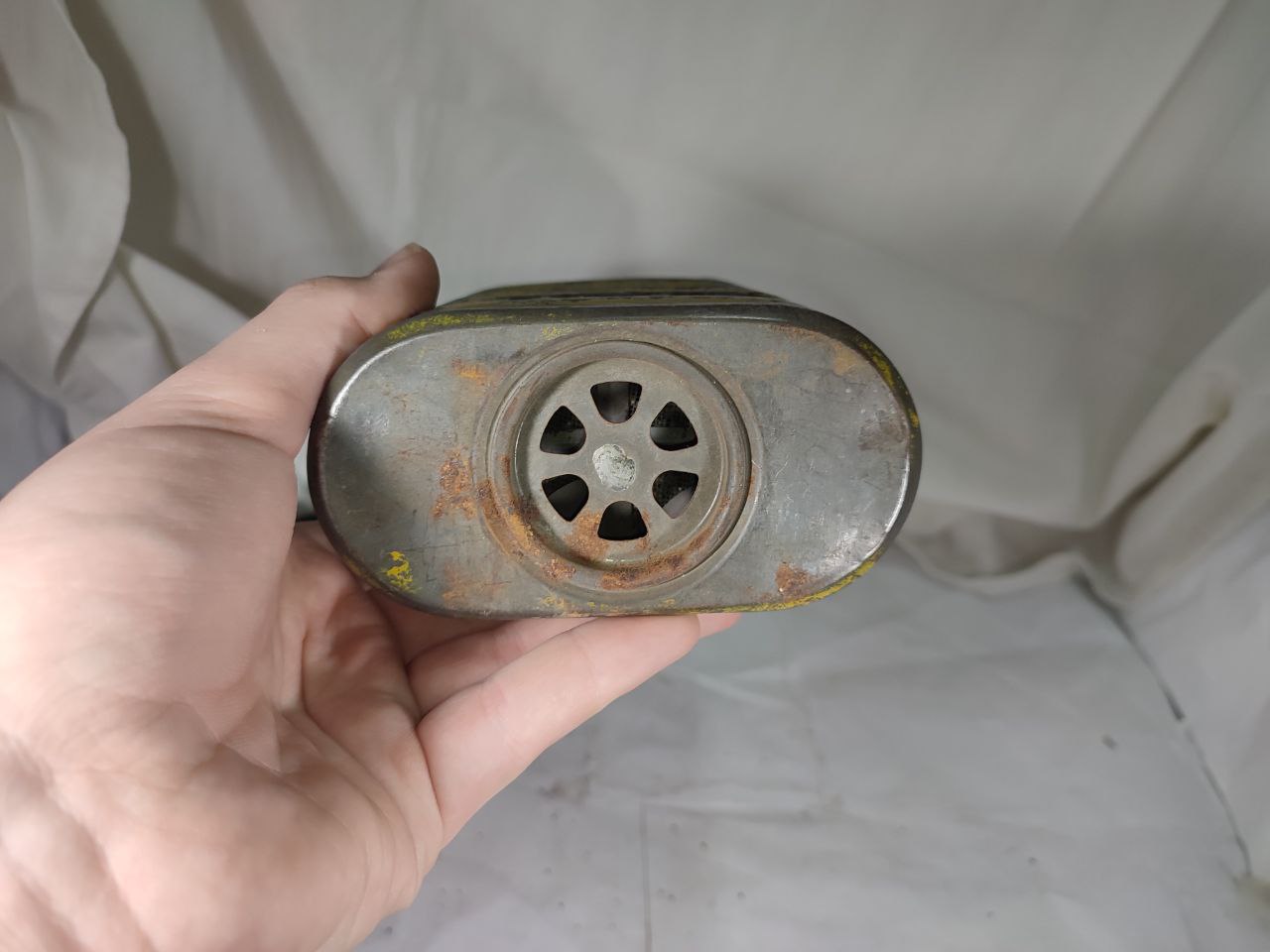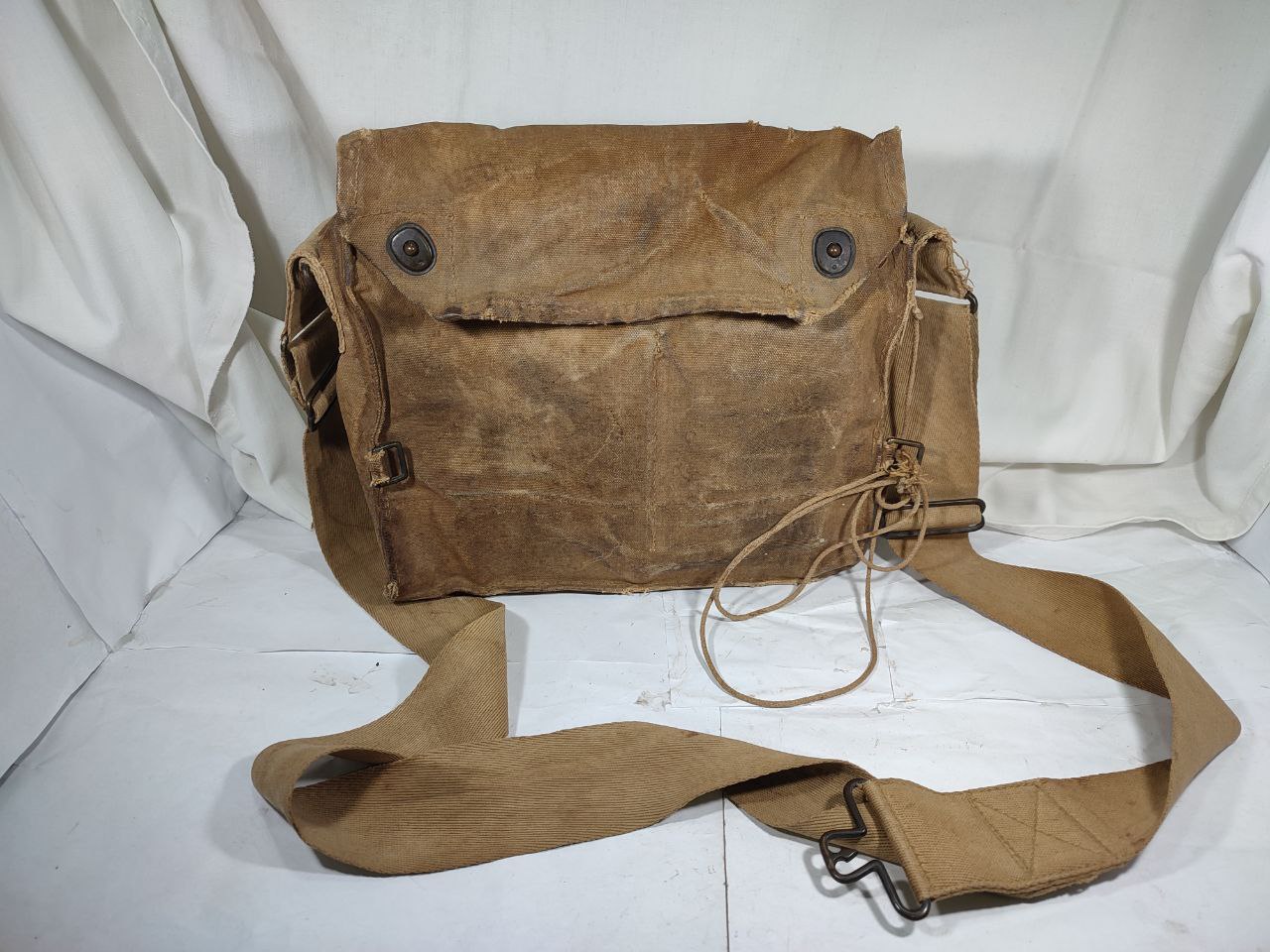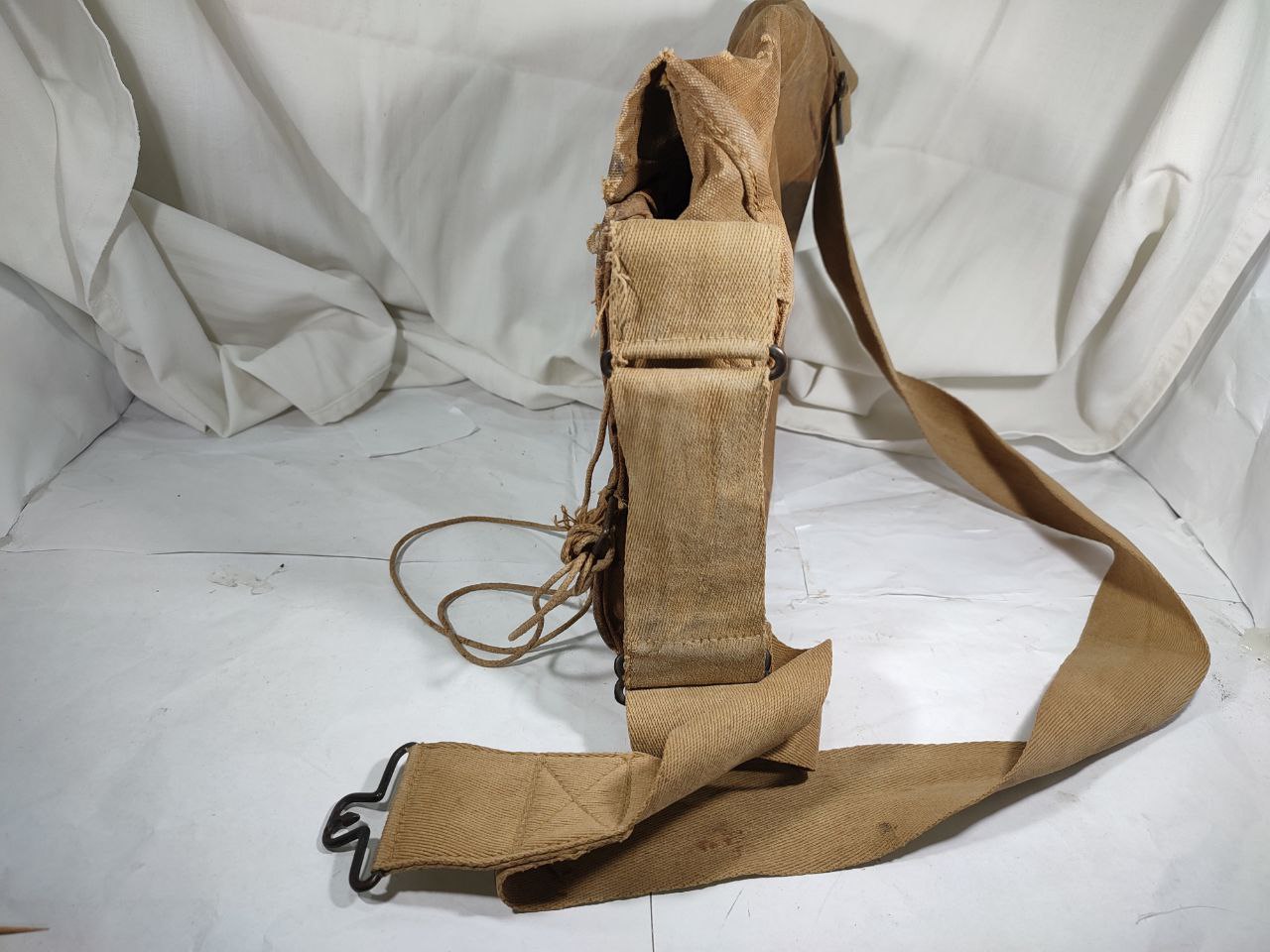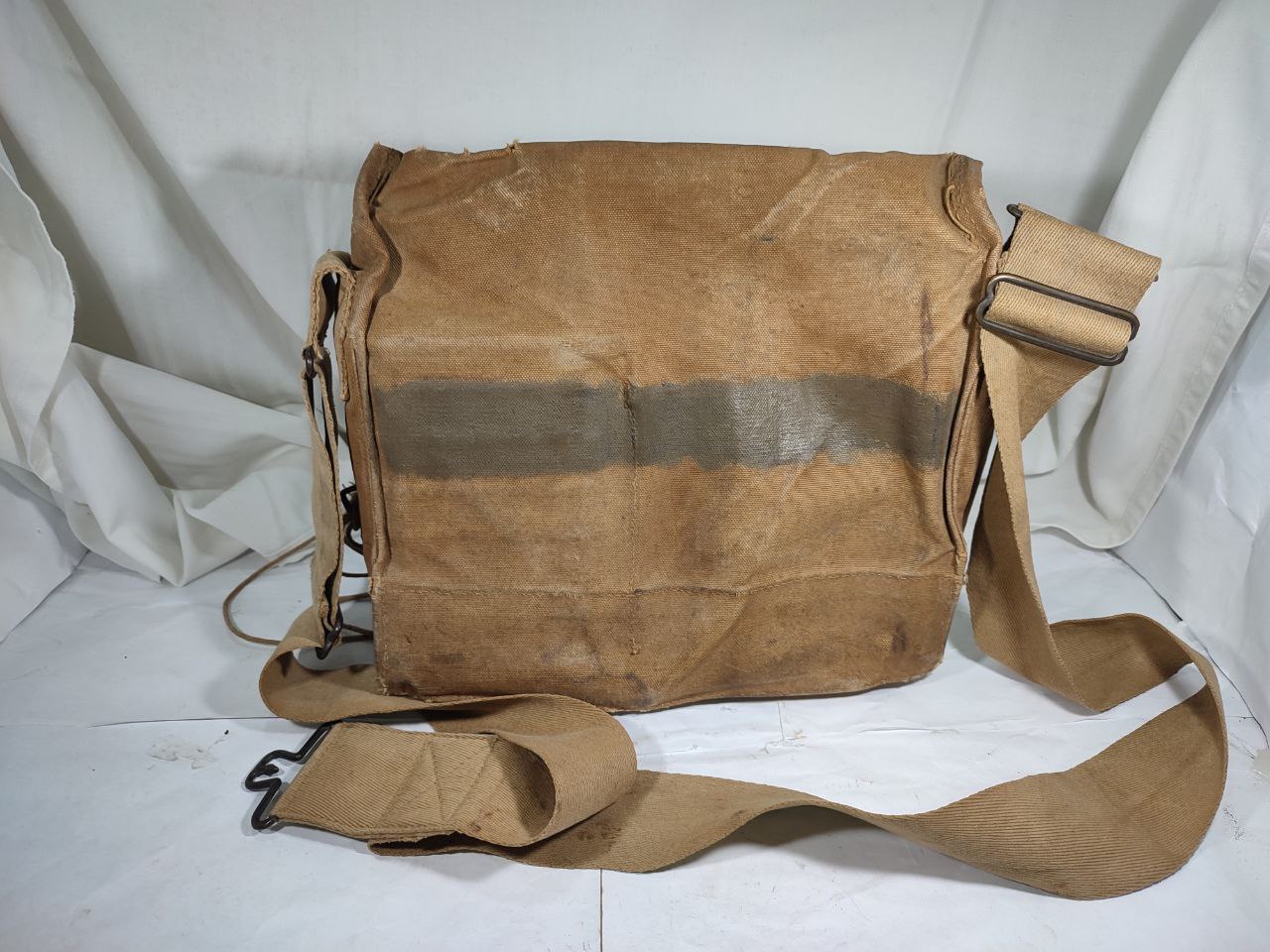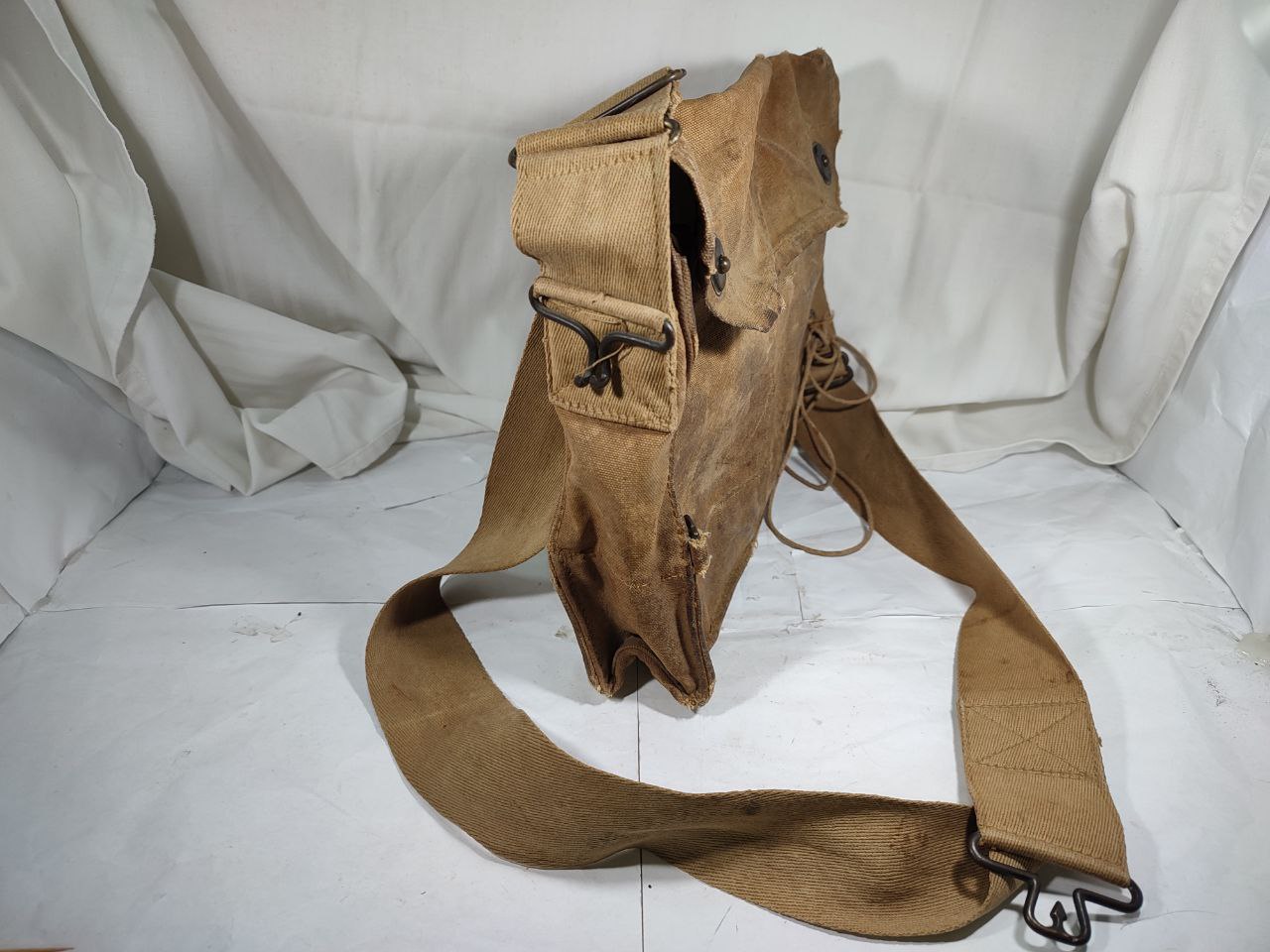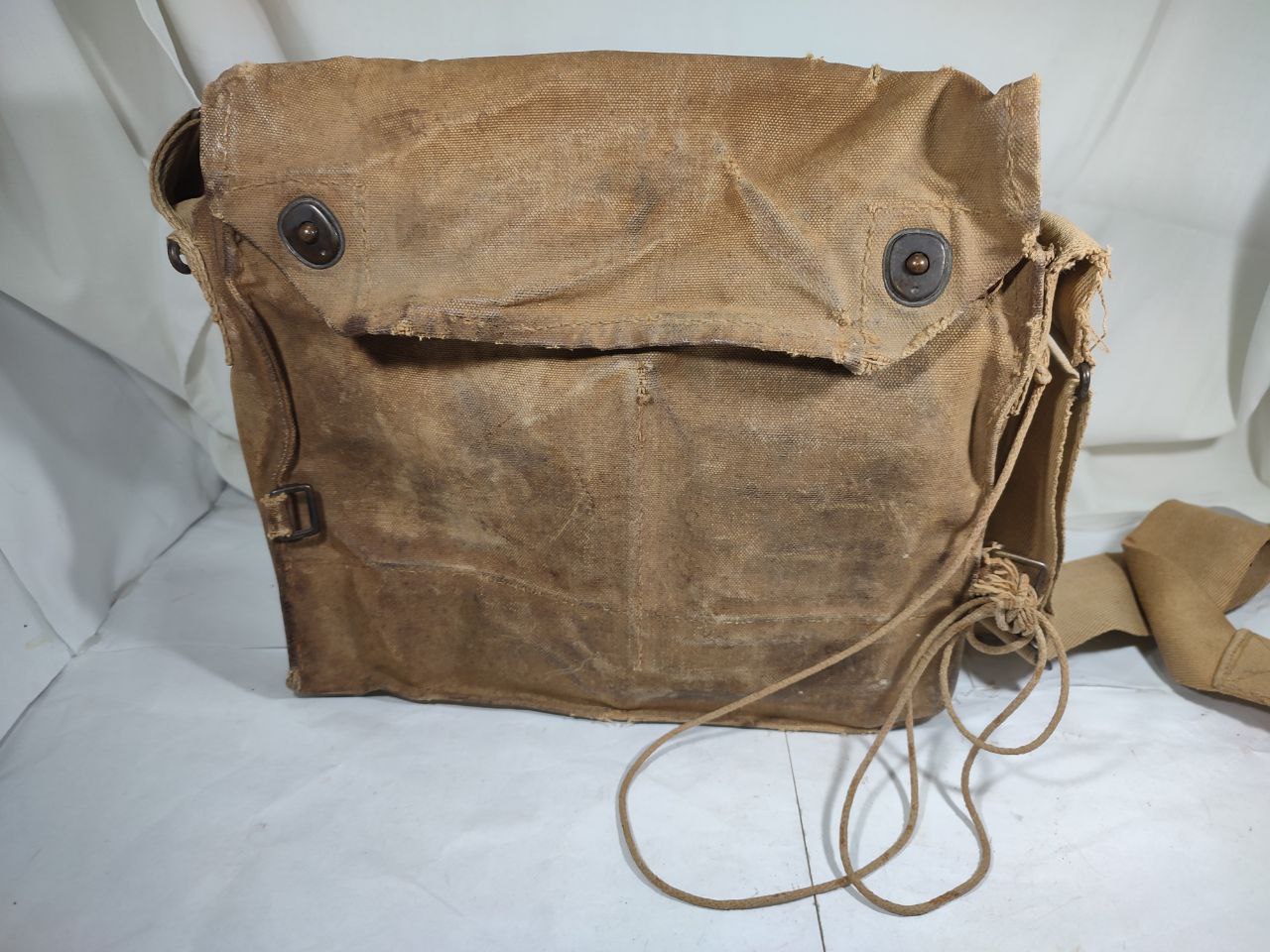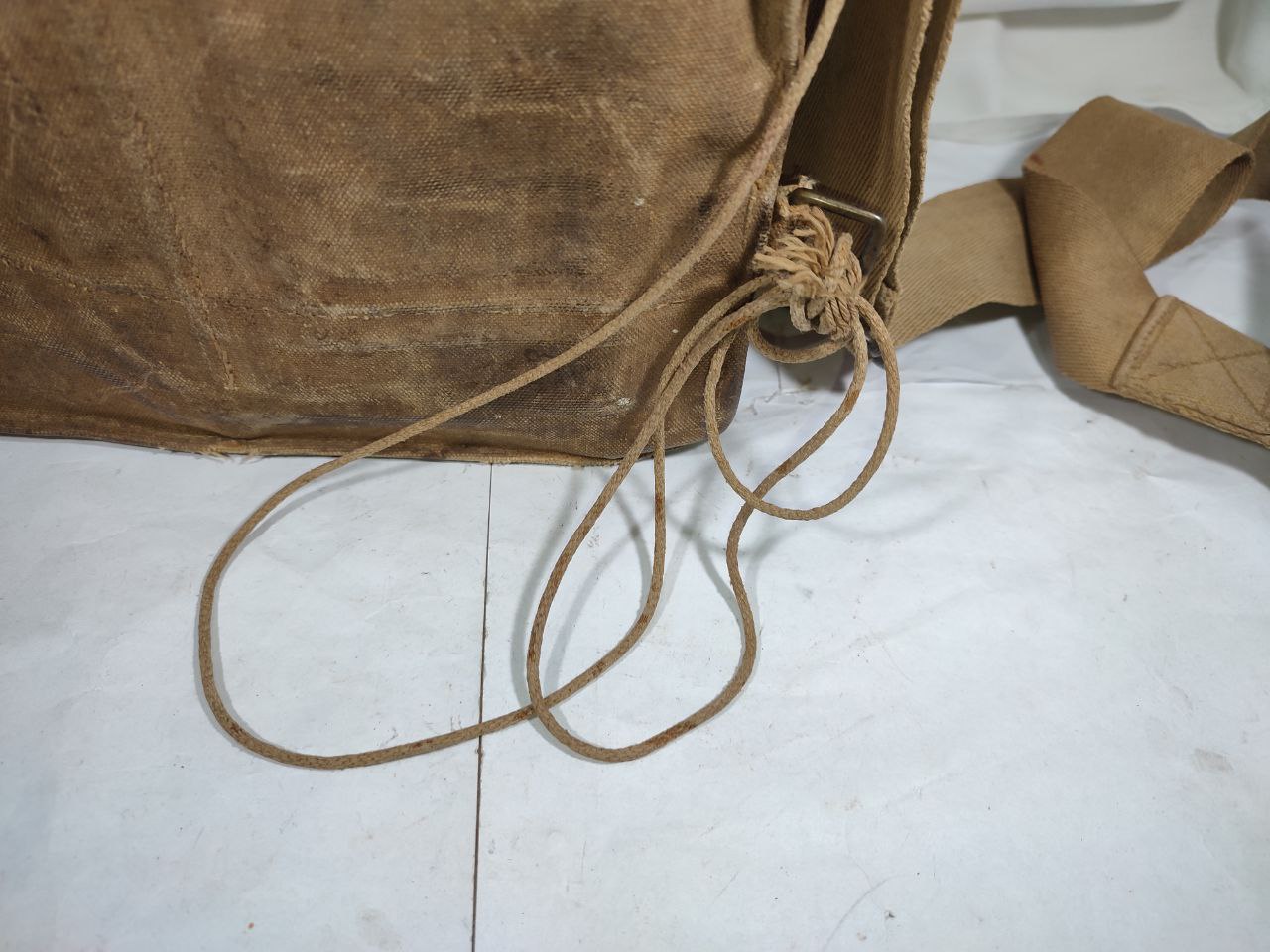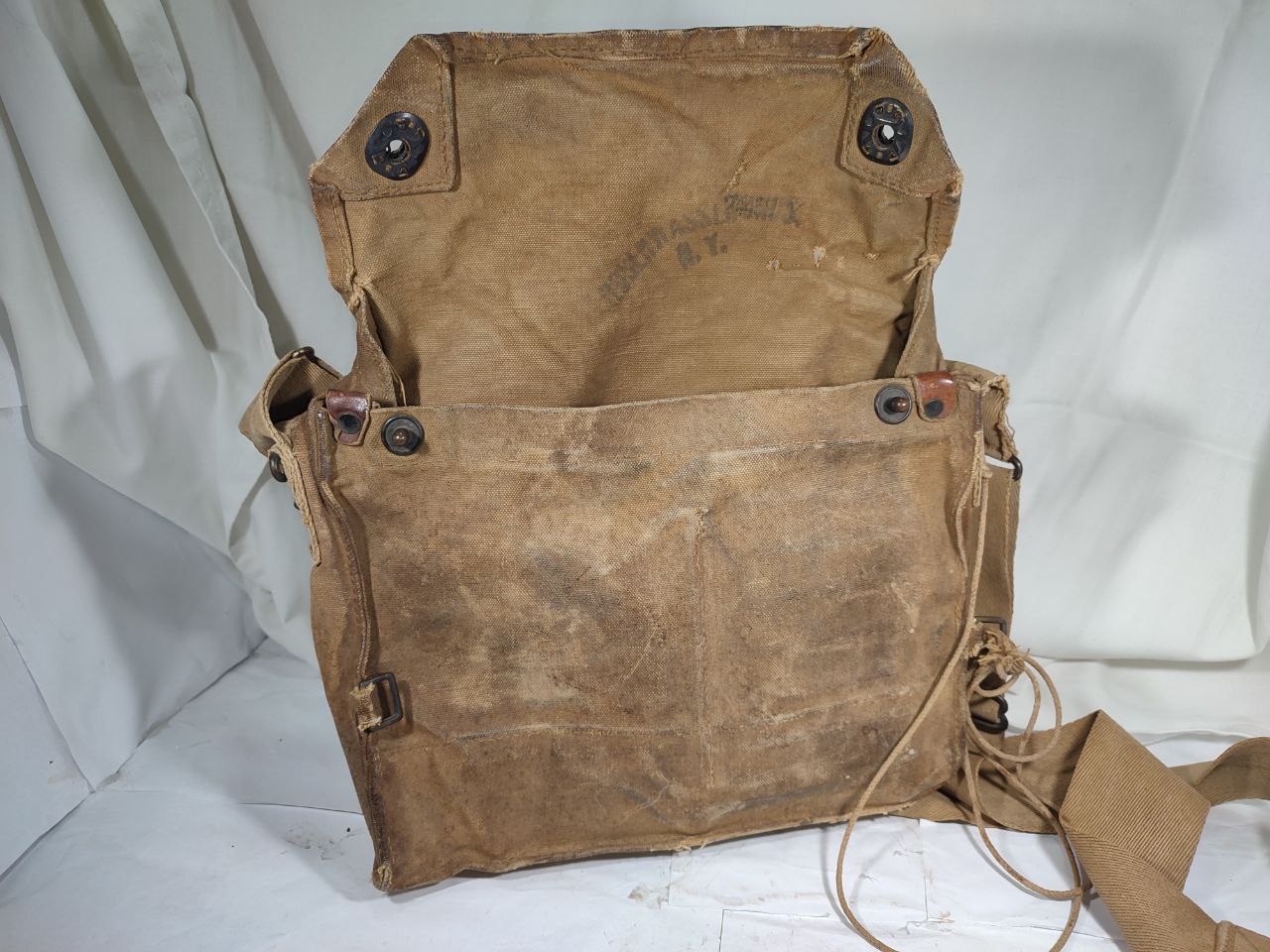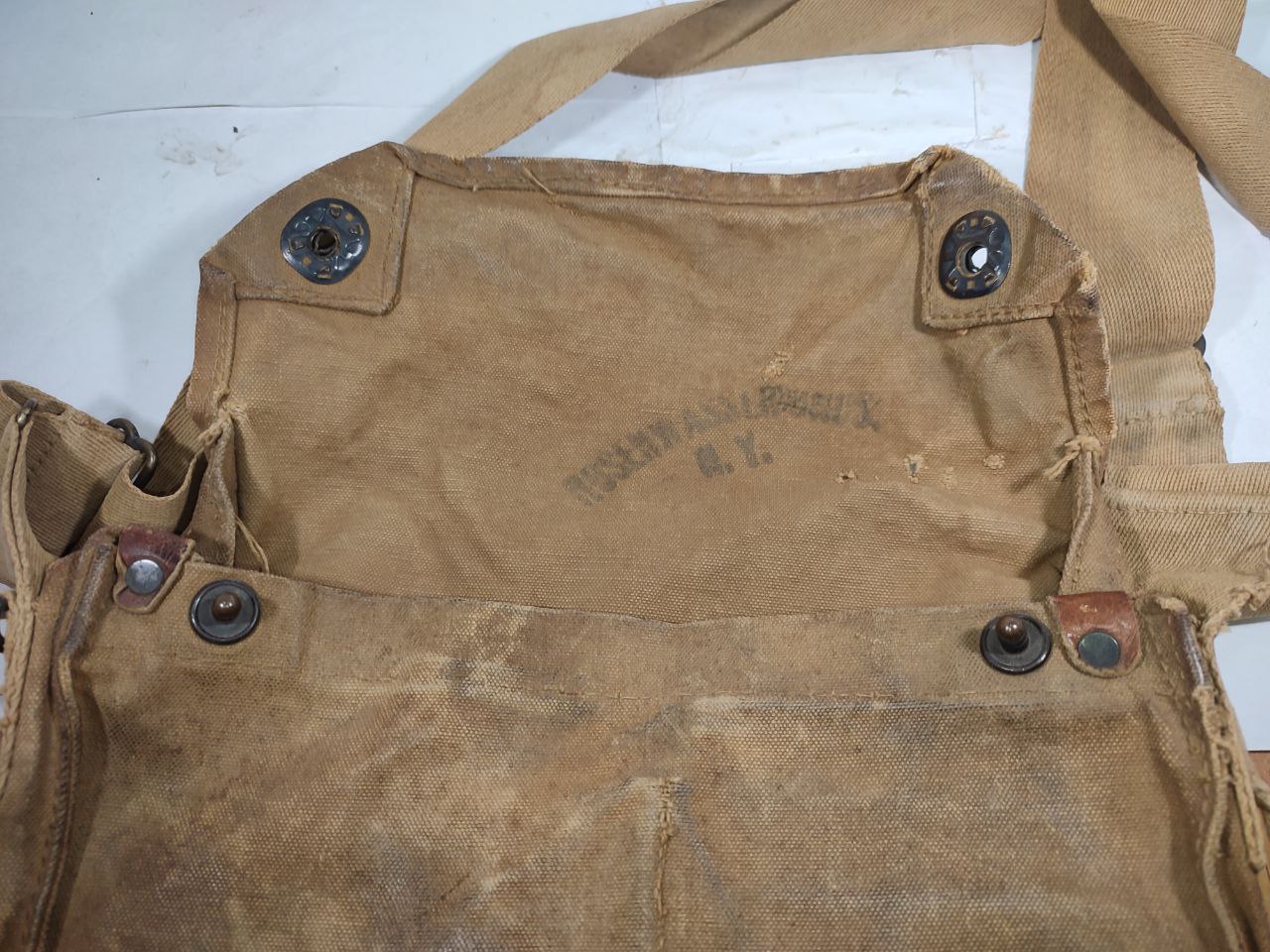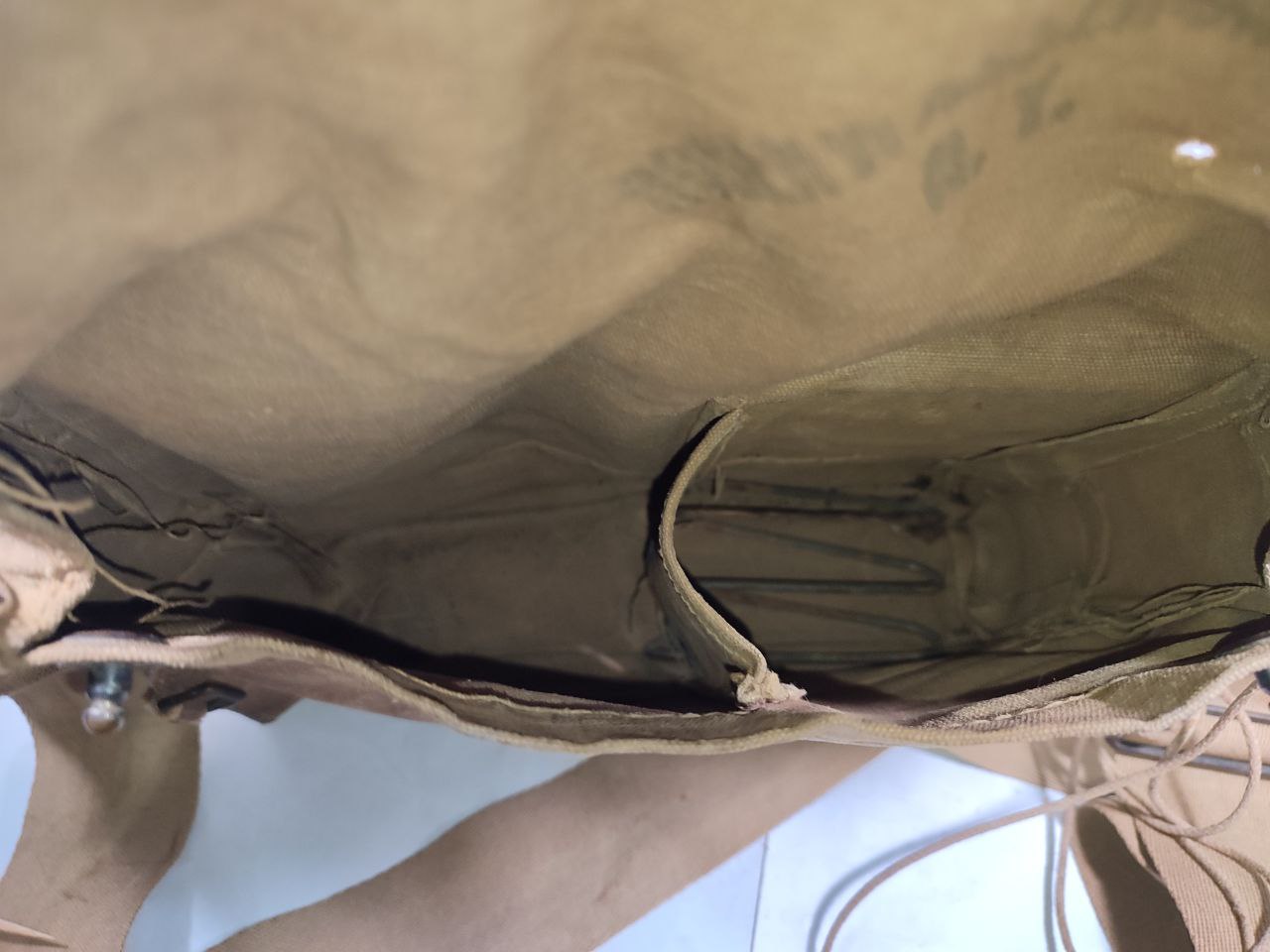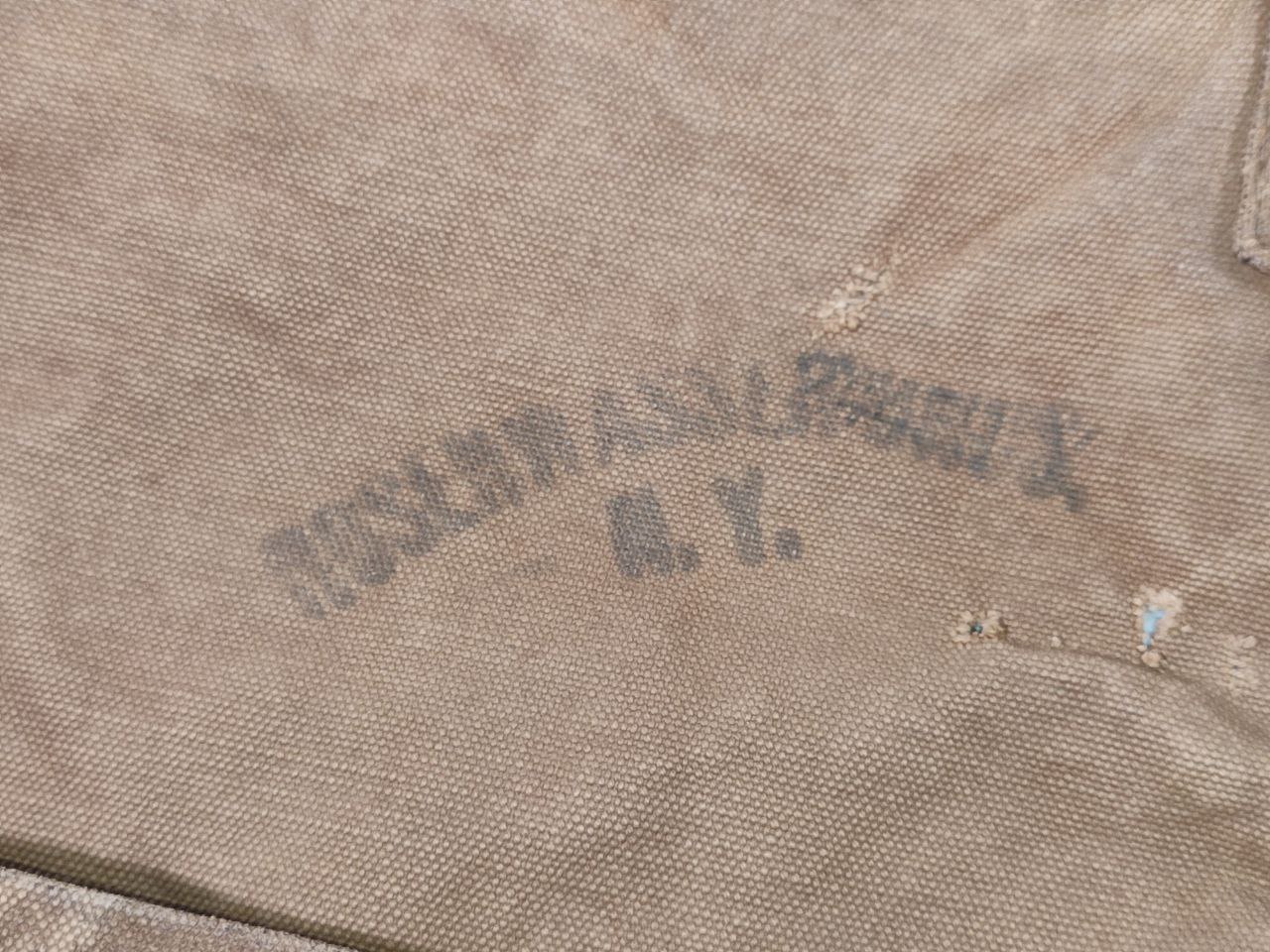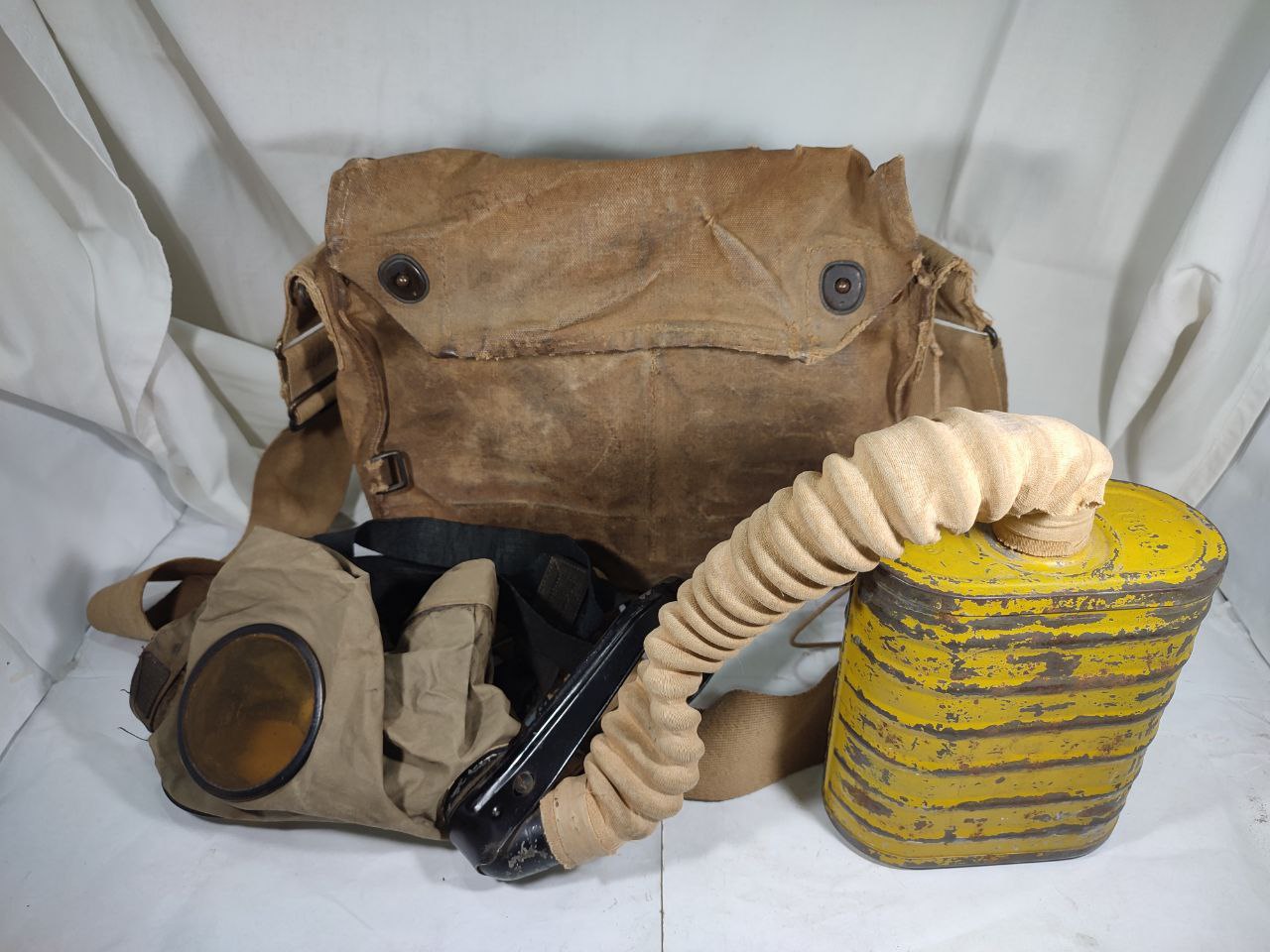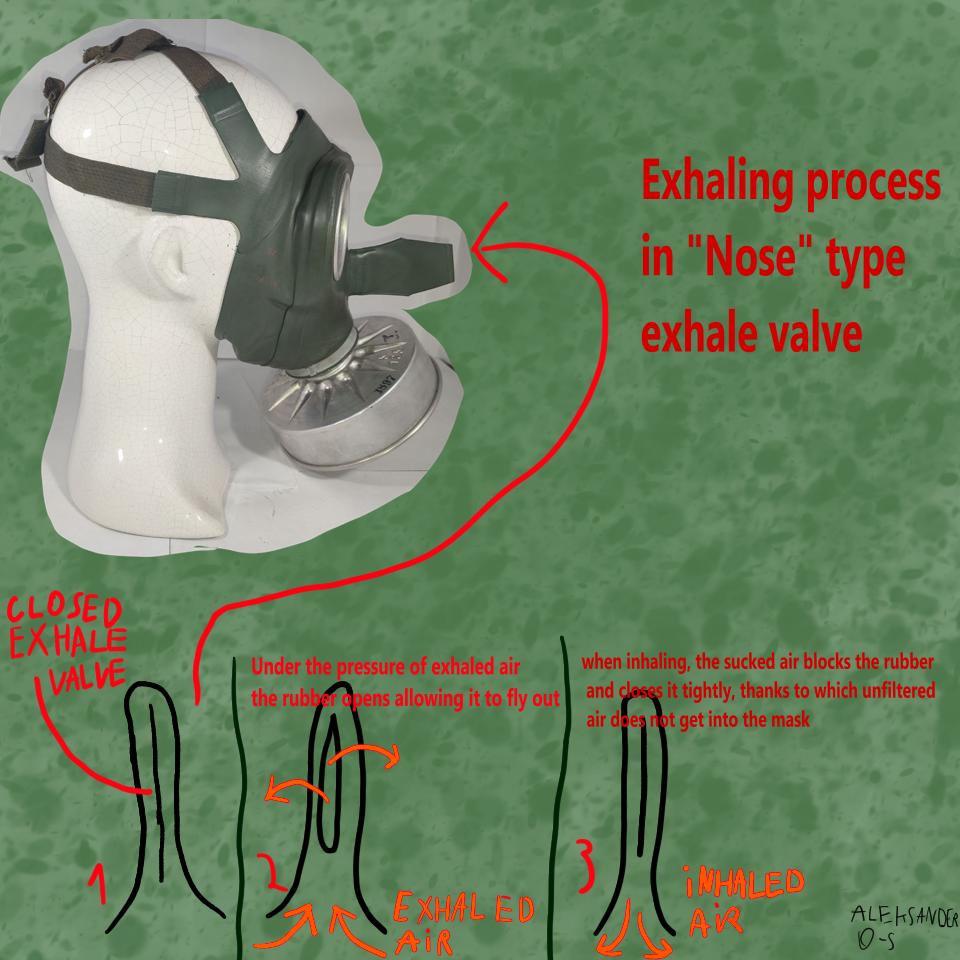Corrected English Model
(early version)
The CEM (Corrected English Model) gas mask was my first WW1 gas mask but also the first successful fully American gas mask. But without getting ahead of the facts, we will start with its younger and less successful (or actually not at all) brother, namely the American Small Box Respirator (ASBR for short). Well, after the USA entered World War I, it turned out that there was no gas mask produced in the country that could be easily distributed to soldiers. This task was entrusted to Dr. William Chauncey Geer, however, had very limited time to create it (or rather to create and develop a variant of the Small Box Respirator mask that will be produced in America). Ultimately, just over 20,000 ASBR masks were produced and sent to the British for testing. However, the masks turned out to be completely useless due to the filters getting stuck (which made breathing impossible) and the general lack of resistance to most gases. Although the masks eventually began to be used as training masks, it did not solve the problem that America did not have its own gas mask. Fortunately, it was finally decided to learn from our mistakes and that is how CEM was created. In October 1917, CEM was finally accepted for use. Now a little about the mask itself (about combined filters later), early CEM masks (such as mine [the variant of the mask itself indicates the oldest variant of the mask]) had very thick and not necessarily comfortable exhaust valve covers (in the form of the so-called "nose" which can be also seen in masks such as the Civilian Duty Respirator VM37 or VM40) which was clearly copied from the exhalation valve cover of version 2 of the Small Box respirator mask, later CEM masks have a much smaller and lighter valve cover design. Other differences between the newer and older masks are the visor covers, in the older ones it is a thin rolled aluminum plate (like mine), in the newer ones it is much wider, and in those that I would consider "newest" it is literally an even wider, reinforced rolled plate. (in short, the wider the visor cover, the younger the mask). These masks, which can be best noticed by looking at the photos from the inside of the mask, have nose clips and a mouthpiece. This design, hated by soldiers since the days of the British SBR, was caused by the fact that, like SBR masks, CEM masks were not 100% tight. For them to work, you had to put on nose clips (they prevented you from inhaling air through your nose) and put a mouthpiece into your mouth through which you breathed (it was connected to the valve chamber and the combined filter). The mask itself is made of rubberized material and the visors are made of plastic. Masks as an anti-fog system for visors, like most first-war masks, they chose widened cheeks for wiping the visors. The masks were produced in 5 sizes and "extended" versions. To adjust the headband straps, a safety pin was used, which was included in the kit, along with a sheet of paper with instructions, patches and a sheet of paper on which, after using the mask, you wrote down the date, the amount of time spent in the gauze, the type of gas, etc. Now it's time to discuss the combined filters used in CEM masks , the first of them is type G, type G in the early version is very easy to distinguish from others due to its simple structure, the markings are located at the bottom of the filter. Later examples of the G type filter, apart from the markings embossed on the top of the filter (the last letter of the code indicates the filter type, for example in my case it is 105XG), are indistinguishable from the H type to which we are now moving. During World War I, the H-type filter had practically the highest degree of protection, externally it does not differ from the G-type in anything except the previously mentioned letter at the end of the code. The last type is type J which was created to reduce resistance when inhaling air, it is the easiest to distinguish due to the fact that it is painted with green paint. The last thing is the bag, made of a very strong material, it has 2 compartments, one for the filter and the other for the mask. The one for the filter has a spring attached to the bottom, creating a gap between the bag and the filter. Interestingly, my bag still has the original string wrapped around the body, which is quite rare. Despite being over 100 years old, the mask still has a strong smell of phosgene (the most frequently used combat gas in World War I). If I have to describe it somehow, I will describe it in the same way as it is described by another person, the smell of rotten fruit, very unpleasant. Fortunately, apart from the smell, its concentrations are so small that they cannot cause me any harm. However, I respect all of them as I did with all other masks from that period, They took part in the war and gas may still remain on them, and while gases such as Phosgene are not dangerous to the touch, gases such as chlorine gas or mustard gas can and are still dangerous. Let's remember not to put on masks from the First World War, especially if we feel any odor indicating gas lingering on them. The first war still kills, and not only in the form of leftover grenades or unexploded shrapnel.
